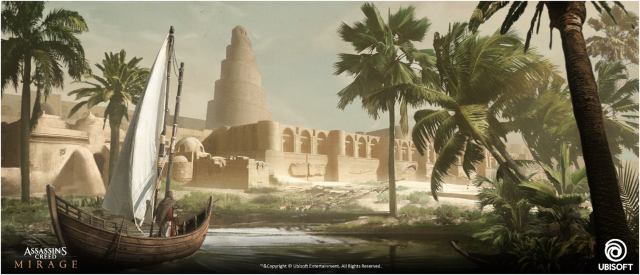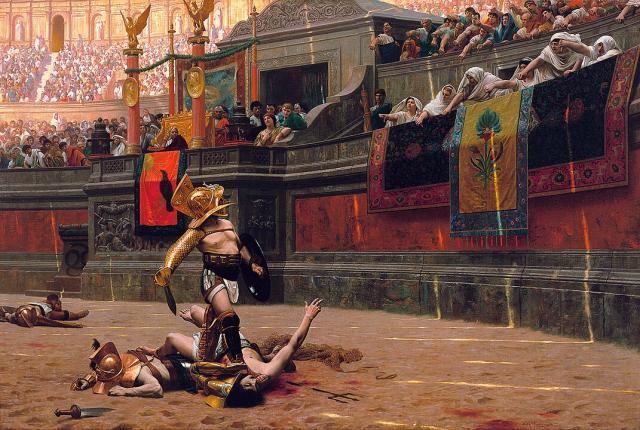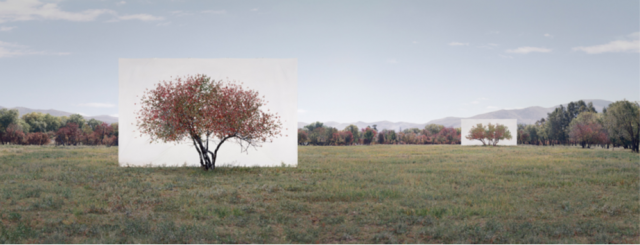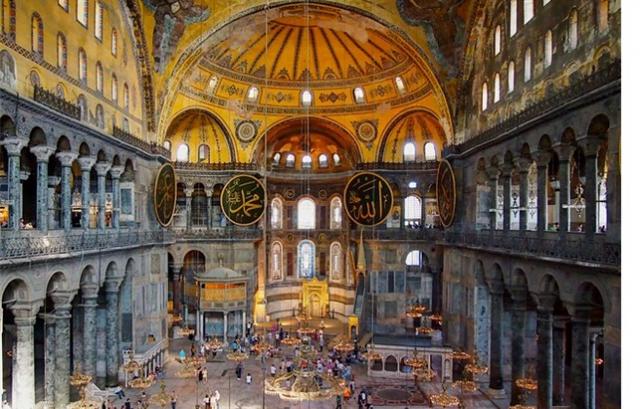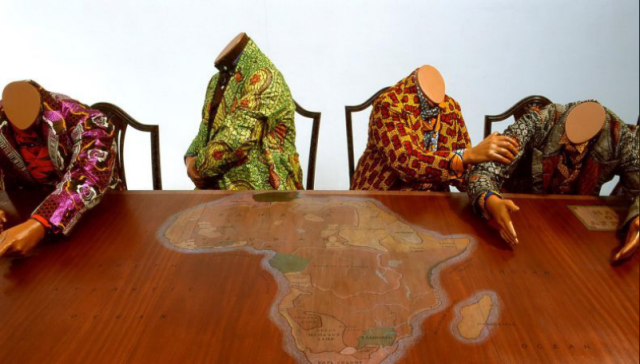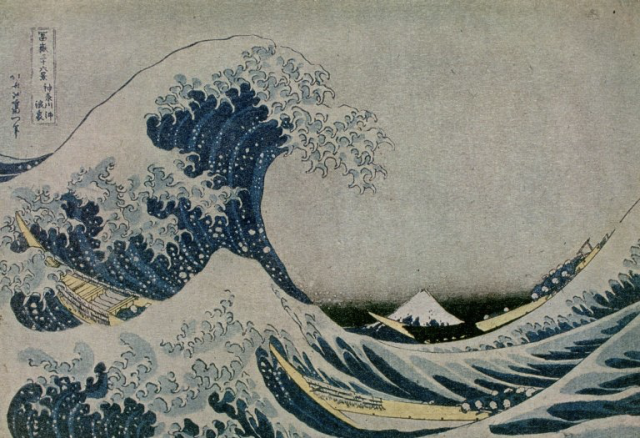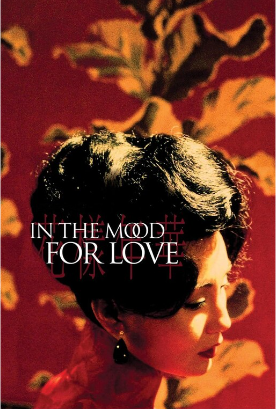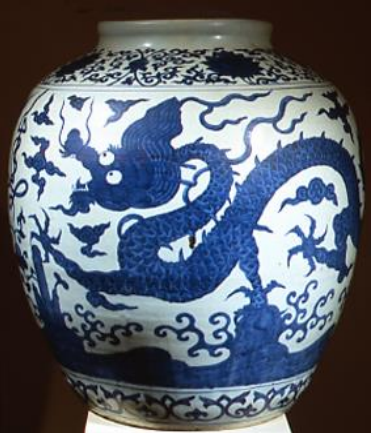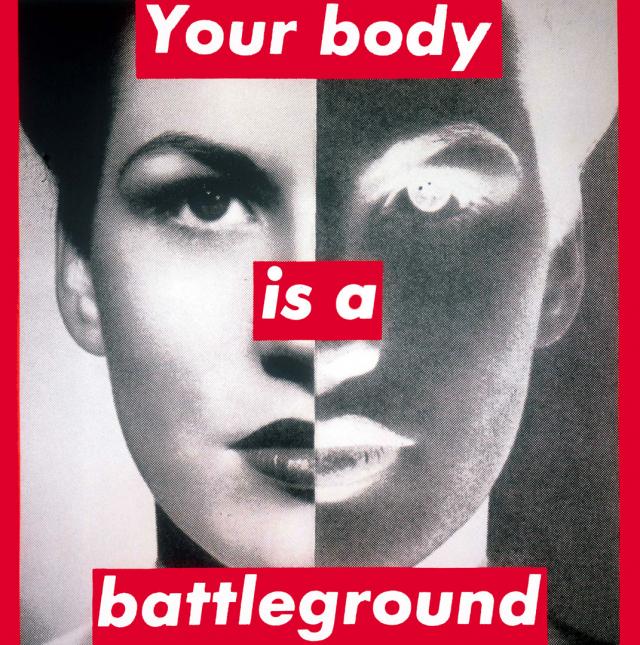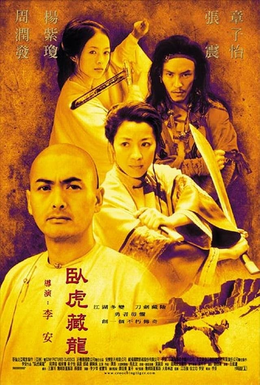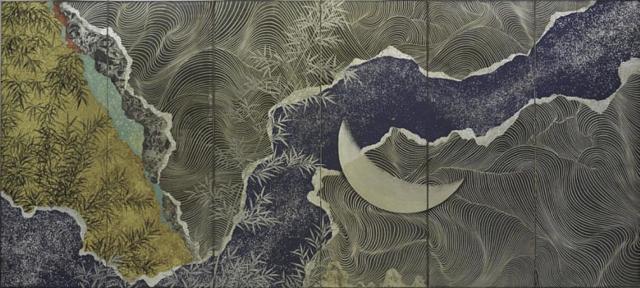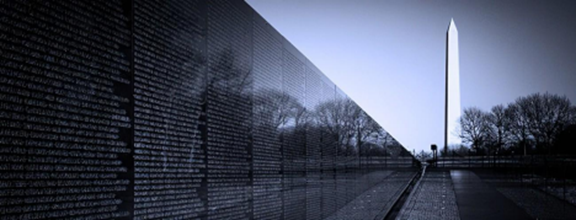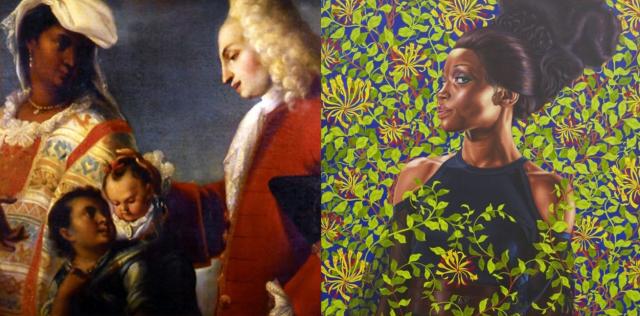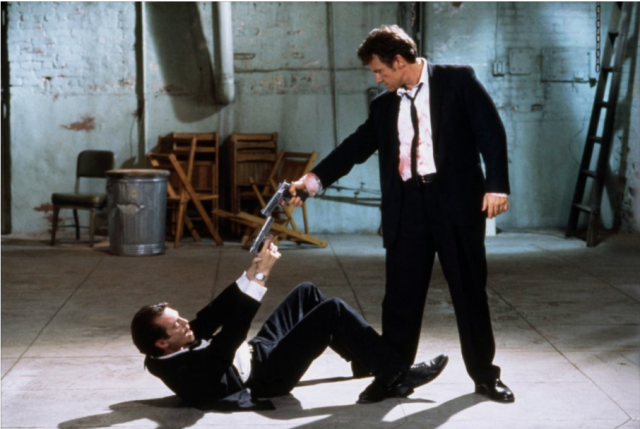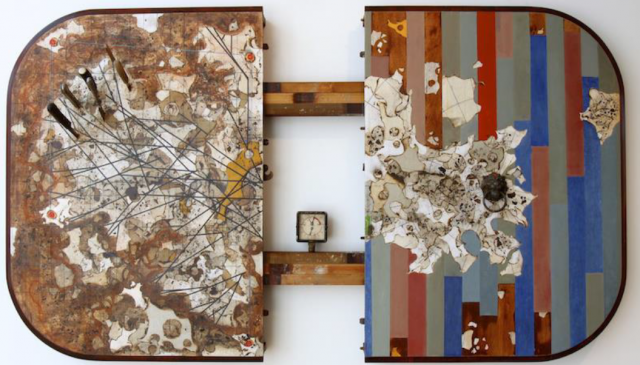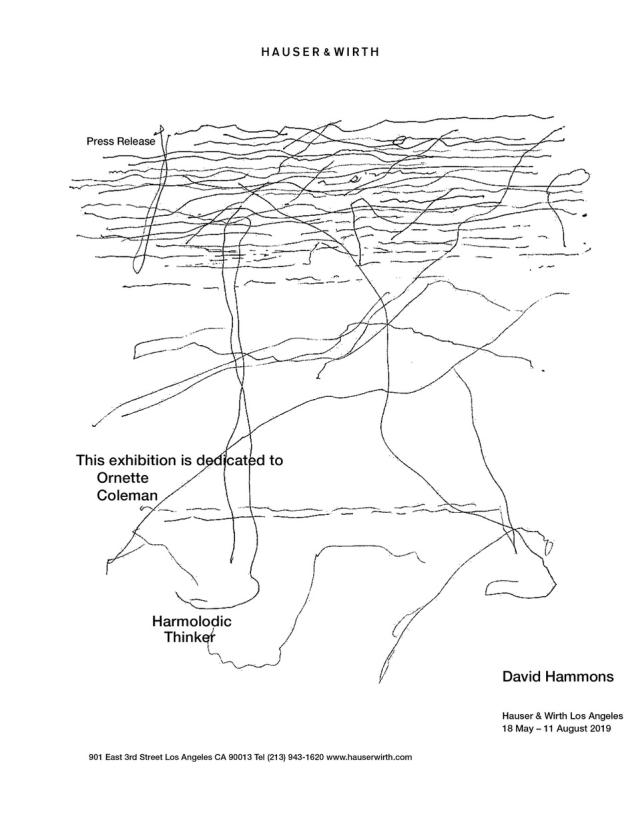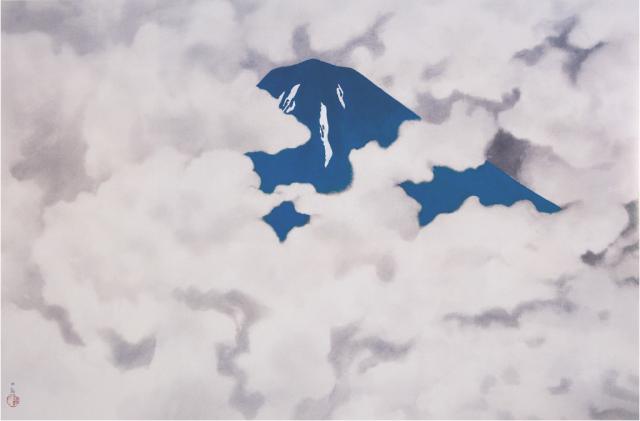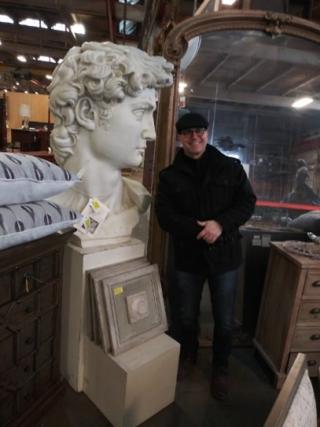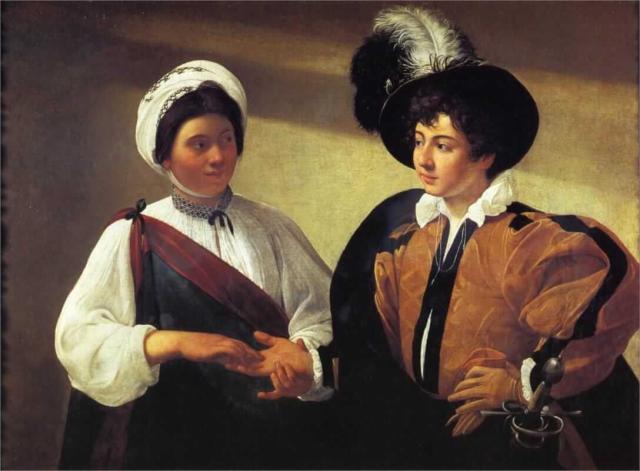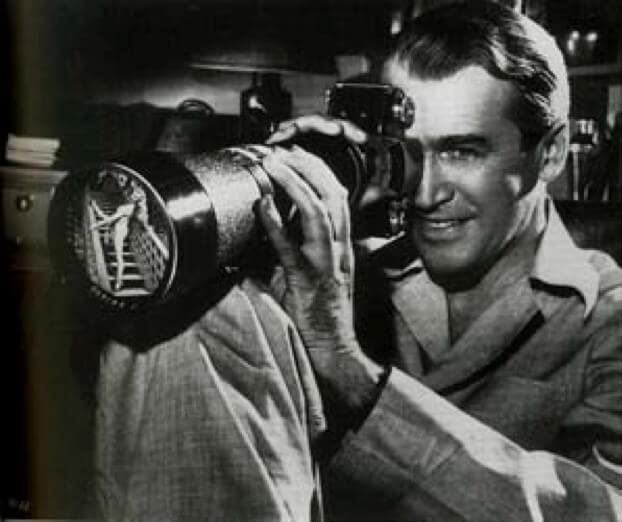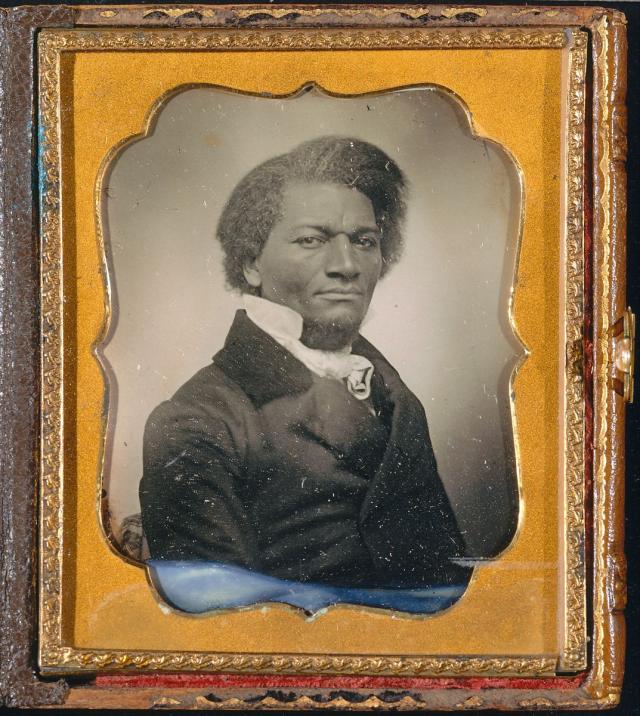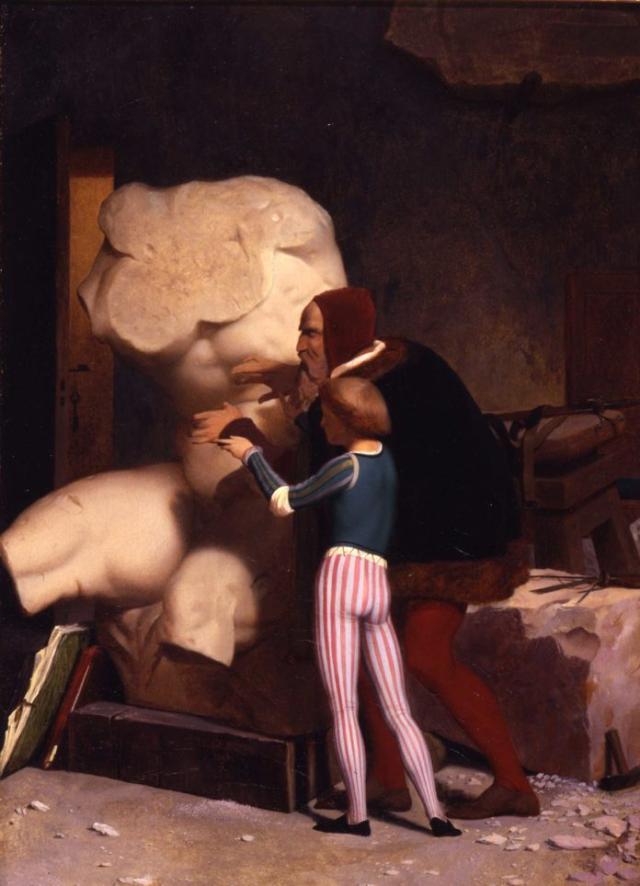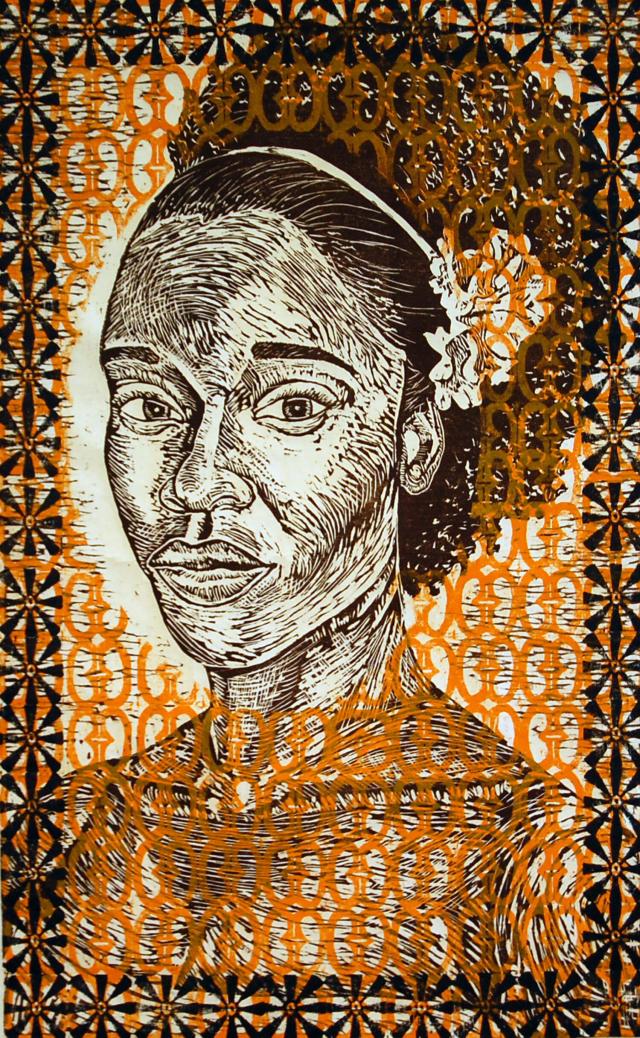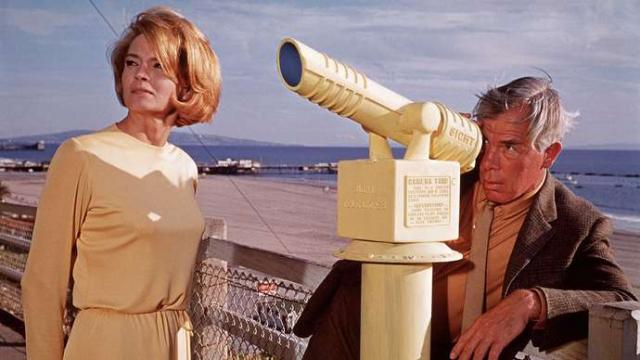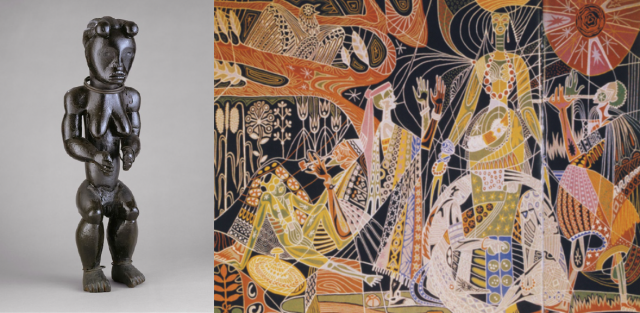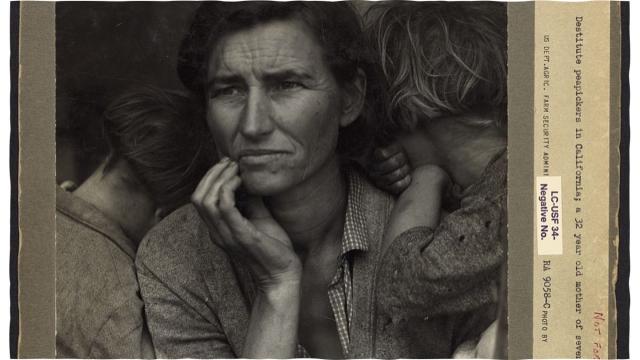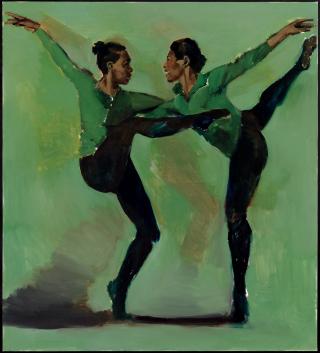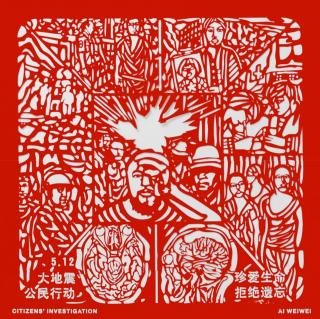Course Descriptions
Our faculty bring their own cutting-edge research into the classroom and introduce students to an array of interpretative approaches and to pressing issues and questions in the discipline. Students enjoy a rich learning experience in the classroom, where the faculty instructs them in an integrated process of active learning, engaged looking and critical thinking and writing.
Spring 2026 Courses
Undergraduate Courses Spring 2026
ARTH200 - Art and Society in Ancient and Medieval Europe to the Mediterranean
Maryl Gensheimer
TuTh 11–11:50am + Sections (ASY 2203)
CORE: HA
DSHU, DVUP
Examines the material culture and visual expressions of Mediterranean and European societies from early times until ca. 1300 CE, emphasizing the political, social, and religious context of the works studied, the relationships of the works to the societies that created them, and the interrelationship of these societies.
ARTH201 - Art and Society in the West from the Renaissance to the Present
Aneta Georgievska-Shine
MW 10-10:50am + Sections (ASY 2203)
CORE: HA
DSHU, DVUP
Examines representative European and American works of art from the later Middle Ages to the present, highlighting the dynamic exchange between artistic and cultural traditions both within periods and across time.
ARTH255 - Art and Society in the Modern American World
Alison Singer
MW 1–2:15pm + Sections (ASY 3215)
DSHU, DVUP
Explores the origins and evolution of art in the modern American world, from the late colonial era to the present, comparing major artistic movements and their historical contexts. Considers the diversity of art across Latin America and the United States, and the ways in which artworks mediate social, ethnic, political, and national identities.
ARTH290 - Art and Society in Asia
Divya Kumar-Dumas
TuTh 12:30–1:45pm (ASY 3215)
DSHU, DVUP, or SCIS
A comparative and interrelational study of Asia’s visual and material cultures, examining how objects, environments, and images shaped political, religious, and social life across time and region.
ARTH301 - Aegean Art and Archaeology
Emily Egan
TuTh 11am–12:15pm (ASY 3215)
Sites and monuments of painting, sculpture, architecture, and the minor arts of Crete, the Cycladic islands, and the Greek mainland from the earliest times to the downfall of the Mycenaean empire.
ARTH324 - Leonardo's World: Art and Experience in Renaissance Italy
Aneta Georgievska-Shine
MW 11am–12:15pm (ASY 3211)
DSHU
Painting, sculpture, architecture, and the decorative arts of the sixteenth century in Italy.
ARTH337 - Cities and the Arts
Elizabeth Honig
MW 11am-12:15pm (ASY 3215)
DSHU
Cities and the Arts courses investigate urban centers as sites of artistic exchange, practice, and
production. This semester’s course will focus on the artistic practices of the three commercial
centers of the early modern period: Venice, Antwerp and Amsterdam. We will begin each of our
case studies by looking at the city as a physical entity–its planning and development, the use of
public spaces, the divisions between public and private, areas of centrality and marginality, and
the architecture of monuments and dwellings. We will then consider the functions of
representations within civic culture–paintings and sculpture in public places, but also the
marketing and consumption of artworks (prints, paintings) as social products which commented
upon, engaged with, and reflected the social and economic concerns of each place. We will
attend to tensions caused by the interface with a greater, global world, and how the arts
responded to cultural diversity.
ARTH357 - History of Photography
Alison Singer
MW 3–4:15pm (ASY 3215)
An exploration of the historical, social, aesthetic, and technological developments of the photographic medium and its relationship to other modes of visual representation in the creation of the modern world.
ARTH359O - Film as Art; Film Gazes and Points of View
Greg Metcalf
W 3:30pm–7:00pm (ASY 4213A)
Films have a "Point of View" that is constructed through different elements of form and narrative, from where the camera is placed to who is writing the script. This POV -- or "the gaze" -- tells us "who we are" when watching a film (or look at a painting). We will explore Laura Mulvey's original theory of the gaze from the 1970s and then consider how -- or if -- it changes in films up to the present day, exploring literal points of view, subjective and unreliable narrative, the way films make us identify with the "wrong" characters, define normality, the way changing a POV changes meaning, and the how the same story changes over time, across cultures or between directors.
ARTH389O - Special Topics in Art History and Archaeology; Museum and Gallery Communications
Raino Isto
Th 2–4:30pm (ASY 3211)
Explores both the history and practices of curating, analyzing the centrality of the figure of the curator in contemporary discussions about art and its social relevance. We will examine the ways that the curatorial function has developed across different institutional and independent contexts, and what it has meant for artists, curators, critics, and other cultural figures to perform this role. We will look at collective, individual, and institutional strategies for curating, and consider some of the practical roles often performed by curators. We will consider the curator as a historical expert, as a person tasked with caring for collections, as a narrator of artistic practice and significance, and finally as a networker, looking at their contributions to museums, art galleries, and other modern institutions. We will discuss art history as well as to disciplines such as anthropology and archaeology, attending to current debates around conservation (of artworks, monuments, and institutions) as well as discussions around care and cultural survivance as they inform current practices focusing on marginalized cultural groups. This investigation will be global in scope: we will look at the development of curatorial discourse and practice from a variety of geographic contexts and historical periods.
ARTH488E - Colloquium in Art History; Life and Death in Homeric Greece: The Art and Archaeology of Bronze Age Pylos
Emily Egan
Tu 2–4:30pm (ASY 4213A)
Presents the art and archaeology of one of the key settings in Homer's Odyssey, Bronze Age (ca. 3000-1000 BCE) Pylos, in the Greek Peloponnese. Together, we will explore the site and its showpieces, "The Palace of Nestor" and the recently discovered "Grave of the Griffin Warrior" using a variety of methodologies and resources. We will unpack excavation strategies and learn about the site s myriad finds, includingceramics, stone seals, gold signet rings, frescoes, and clay tablets inscribed with Linear B, the script used to write the earliest form of the Greek language. We will also consider the different forms ofmanual and digital documentation and reconstruction that have been used at the site since the 1930s, and pull ideas together in the crafting of individual research papers.
ARTH488M - Colloquium in Art History; Religion and Popular Art in Modern India and South Asia
Karin Zitzewitz
TuTh 9:30–10:45am (ASY 3217)
Learn how religion in India and South Asia--Hinduism, Islam, and contemporary Buddhism--has shaped popular art since the late 19th century. We will look at posters and advertising, film and television, public statuary, monuments, and festivals, as well as contemporary art that engages popular aesthetics.
ARTH488Q - Colloquium in Art History; Art History in Video Games: Challenging Orientalism in Contemporary Islamicate Visual Culture
Sarah Slingluff
M 1-3:30pm (ASY 4213A)
Explores representations of Islamicate societies in video games, examining how history, culture, and aesthetics are adapted and reimagined in interactive media. Students will analyze game narratives, visual design, and mechanics to understand how they reflect or distort historical realities. This course will investigate themes such as Orientalism, authenticity, and cultural appropriation. The course incorporates readings from art history, game studies, and postcolonial theory to support critical engagement. Assignments will introduce students to game design processes, focusing on ethical and historically-informed creative processes. No prior gaming experience is required-just a curiosity about the intersection of art, history, and digital culture.
ARTH488U - Colloquium in Art History; Entertainment and Empire: Rome's Gladiators, Actors, and Charioteers
Maryl Gensheimer
Tu 12:30pm–3pm (ASY 3211)
Step inside the roaring amphitheaters and boisterous circuses of ancient Rome. This course explores the lives of gladiators, actors, charioteers, and other entertainers - the superstars of the ancient Roman world - as well as the social and cultural forces that made them icons. Learn how power, propaganda, and performance intersected during the Empire's most popular public events. We'll investigate the literary and archaeological evidence for the spectacles themselves, the politics behind the games, and the myths that still shape modern pop culture as seen through Hollywood films. Students will gain a deeper understanding of Roman arena games and a sharper eye for historical accuracy on screen.
Graduate Courses Spring 2026
ARTH698 - Teaching Art History
Joshua Shannon
W 3–5:30pm (ASY 4304)
ARTH759L - Seminar in Twentieth-Century Art; Contemporary Art and Biology
Joshua Shannon
Tu 12:30-3pm (ASY 4304)
Considers art since the 1970s, and especially art since 2000, as it addresses some of the thorniest questions and discoveries in biology. We will focus on art involving trees, fungus, and nonhuman animals, as well as art inquiring into the nature of consciousness. Readings will be drawn not only from art history and criticism but also from recent work in biology and consciousness studies. Although our readings will focus on contemporary art, essays on other fields within art history are welcome.
ARTH789C - Selected Topics in Art History; Sculpture: Process, Object, Publics
Tess Korobkin
Th 2:30-5pm (ASY 4304)
Explores key developments in the history, theory and practice of sculpture from the 19th century through the present. Focusing primarily on Britain and the United States, and their empires, the course examines the changing aesthetic priorities and conceptions of sculpture and its role in the world. Key issues include authorship and reproduction, sites and modes of display, the politics of monuments, and sculpture's publics.
Fall 2025 courses
Undergraduate Courses Fall 2025
ARTH200 - Art and Society in Ancient and Medieval Europe to the Mediterranean
Emily Egan
TuTh 11–11:50am + Sections (ASY 2203)
CORE: HA
DSHU, DVUP
ARTH 200 is designed to introduce you to some of the principal works of ancient and medieval Western art and architecture. Throughout the semester, we will examine art created in two and three dimensions, including sculpture, architecture, and painting. This course adopts a chronological approach to the study of, and intersections between, art and society in ancient and medieval Europe and the Mediterranean. We begin with the art of ancient Egypt and end with developments in the Middle Ages. We emphasize the historical, religious, political, social, and cultural contexts of the works studied; the relationship of the works of art to the society that created them; and the interrelationships of these societies as seen through their material and visual culture.
ARTH201 (Freshmen Connection) - Art and Society in the West from the Renaissance to the Present
Tony Cui
MW 3-4:14 pm (KNI 1103)
CORE: HA
DSHU, DVUP
Examines representative European and American works of art from the later Middle Ages to the present, highlighting the dynamic exchange between artistic and cultural traditions both within periods and across time.
ARTH261 - Monuments, Monumentality, and the Art of Memorial
Tess Korobkin
MW 12:00pm–12:50pm + Sections (ASY 2309)
DSHU, DVUP, or SCIS
Why do societies create monuments? And why do they preserve and destroy, change and remove them? How do monuments embody cultural values, shape historical narratives, and become sites of mourning and memory? This course investigates the political and cultural work of monuments across time and space, from the ancient world to European empires to the contemporary United States. The issues we consider include intercultural exchange and religious contexts, race and representation, and appropriation and iconoclasm.
ARTH262 - Public Art
Abigail McEwen
Tu 12:30pm–3pm (MMH 0108)
DSHU or DSSP
How does public art function on a university campus, in major cities, and across the United States? This course invites students to empirically study the modern history and civic values of public art spanning sculpture, painting, mixed-media, and installation. We consider the nature of public space, the politics of representation and community, and the civic and memorial functions of art. The course is built around a semester-long project in which students will commission a work of public art for our College Park campus.
ARTH265 How (and Why) to Look at Art in the Era of Climate Change
Joshua Shannon
MW 11-11:50 + section (ASY 2203)
DSHU or SCIS
How can art help us build the mindset necessary for fashioning a sustainable civilization? Paintings, photographs, films, novels, songs, and other creative works as they shape beliefs related to sustainability and justice.
ARTH289A - Special Topics in Art History and Archaeology; Ethics of Art Museums
Alison Singer
MW 2–3:15pm (ASY 3211)
Examines the art museum as a site of aesthetic contemplation, Cultural preservation, education, and business as we attempt to answer questions such as: Why were art museums established? What ethical questions might they raise for artists, museum professionals, and members of the public?
ARTH303 - Roman Art and Archaeology
Maryl Gensheimer
TuTh 11–12:15pm (ASY 3215)
DSHU or DVUP
Sites and monuments of painting, sculpture, architecture, and the minor arts from the earliest times through the third century A.D. with emphasis on the Italian peninsula from the Etruscan period through that of Imperial Rome.
ARTH305 Archaeological Methods and Practice
George Hambrecht
TuTh 2-3:15 (BPS 0283)
Prerequisite: ANTH240, ARTH200, CLAS180, or CLAS190.
Cross-listed with: ANTH305, CLAS305, JWST319Y.
Credit only granted for: ANTH305, ARTH305, CLAS305, or JWST319Y
DSHS
A team-taught, interdisciplinary course discussing theories, methods, and ethical issues in the practice of archaeology.
ARTH313 Medieval Art: Cultural Exchanges in the Byzantine World
Aneta Georgievska-Shine
TuTh 2-3:15 (ASY 3215)
DSHU or DVUP
Focuses on the art and architecture from the eastern Mediterranean, specifically, the Byzantine empire. Our broad focus will be on the formation and evolution of the visual arts in Byzantium as a result of exchanges with various cultural, ethnic, and religious entities and traditions. In this context, we will be looking at the legacy of the Graeco-Roman past, contacts with Islamic world, as well as with people and cultures along the periphery of Byzantium: from the Balkan peninsula, to Sicily and Russia.
ARTH359E - Picturing Contemporary Life
Raino Isto
Tu 4:30-7pm (ASY 3211)
DSHU
Visual art since 1945, with an emphasis on North America and Europe.
ARTH359E - Film as Art; Film as Dream
Greg Metcalf
W 3:30pm–7:00pm (ASY 4213A)
The course first considers film created by the original Surrealists and their exploration of the unconscious and the freedom and language of dreams. Then psychological and philosophical dream theories will be applied to more recent and mainstream film to reveal structures and subtext in films from directors using elements of the Surreal including Lynch, Cronenberg, and Jodorowsky, and Svankmajer.
ARTH389R - Special Topics in Art History and Archaeology; North American Indigenous Modern and Contemporary Art
Alison Singer
MW 4–5:15pm (ASY 3211)
Explores modern and contemporary art in North America by First Nations, Metis, and Inuit artists, focusing on a diverse range of artistic practices and their cultural significance. We will consider key aspects of the social and political lives of Indigenous peoples and the ways in which artists navigate and respond to the legacy of colonialism.
ARTH389U - Special Topics in Art History and Archaeology; The Marks of the Maker: Art and Artists in the Medieval Islamic Mediterranean
Sarah Slingluff
TuTh 9:30–10:45am (ASY 3215)
Throughout the medieval Islamic Mediterranean, individuals inscribed their names on a variety of media, ranging from rock cli?s to manuscripts to buildings. What can we learn about the lives of these people and the societies they lived in by looking at the objects they created? This course examines the artistic production of individuals in early medievalIslamicate societies, with an emphasis on the eighth through twelfth centuries.
ARTH392 - Contemporary Chinese Art and Film
Jason Kuo
M 1:00pm–3:30pm (ASY 4213A)
Cross-listed with: CINE337.
Credit only granted for: ARTH392, FILM329L or CINE337.
Formerly: FILM329L.
DSHU
Contemporary Chinese art and film are arguably the most vibrant of all national arts at the turn of the millennium and have become the face - both figuratively and literally - of contemporary China, a complex society with historic overlays of Confucianism, Taoism, Buddhism, Communism, Post-socialism, and state capitalism. Students will consider a wide range of art forms (painting, photography, video, installation, web-based media, and film) in four broad themes (uses of the past; critiques of power; representations of race, gender, and sexuality; socially engaged art) and explore the complex intertwining of the political, historical, and aesthetic aspects in Chinese contemporary art and film, as well as the multiple contexts in which these artworks are created and circulated.
ARTH488D - Colloquium in Art History; Art and Visual Culture of the Great Depression
Tess Korobkin
M 2–4:30pm (ASY 3215)
During the Great Depression, skyrocketing economic inequality, environmental disasters, and social movements transformed American life. This class focuses on the visual culture of this period-from documentary photography and public murals to film and sculpture. In addition to examining iconic works by artists like Dorothea Lange and Diego Rivera, we will engage archives of photographs, posters, artist papers and other primary sources from the 1930s. In this way, students in this course will not only explore a critical era in American visual culture but also reflect on how we form and use archives to shape our understanding of the past.
ARTH488I - Colloquium in Art History; Living in the Shadow of Vesuvius
Maryl Gensheimer
Tu 2–4:30pm (ASY 3217)
When Mt. Vesufius erupted in 79 CE, Roman cities along the Bay of Naples, such as Pompeii and Herculaneum, were completely buried by volcanic debris. Elite retreats for leisure, such as the villas at Oplontis and Stabiae, were also destroyed. This course will rediscover the lost cities and ancient monuments on the Bay of Naples the temples, theaters, baths , streets, and many houses to understand the infrastructure and daily life of these ancient cities and spaces. Surveys of area archaeological sites will help to contextualize these monuments within their regional and cultural landscape. Material and information will also be drawn from UMD's excavations at Stabiae.
ARTH489B - Colloquium in Art History; Art, Cinema, Law, Money
Jason Kuo
Th 2-4:30pm (ASY 3217)
Examines the manners in which law and money constrained and directed the creation, circulation, distribution, and exhibition of art and cinema. Themes to be explored may include: cinematic representations of artists, bankers, and lawyers; how artists (such as Picasso and Zhang Daqian) achieved financial success and critical acclaim through courting of dealers, critics, collectors, and curators; art crimes (forgery, theft, looting, money laundering); how science fiction films were marketed in response to financial pressures; trials in which artists, artworks, and films acted as protagonists; censorship and self-censorship of art and cinema; art as investment and the roles of private banking services in the global art market.
ARTH488Y - Special Topics in Art History; World Architecture with Omeka
Divya Kumar-Dumas
TuTh 12:30-1:45pm (ASY 3215)
Introduces students to world architecture before 1851 through collaborative, digital, and decolonial methods, using Omeka to build a shared, evolving collection that challenges canonical definitions and centers diverse cultural practices of building and our many ways of learning and knowing.
Graduate Courses Fall 2025
ARTH668A - Studies in Latin American Art and Archaeology; The Politics of Postwar Latin American Art
Abigail McEwen
M 1–3:30pm (ASY 4304)
Considers a range of recent critical and curatorial work on the nature of political and activist art across Latin and Latino/a/x/e America in the postwar period. Case studies focus on media (painting, performance, photography, etc.) as well as on national and regional histories, with aspecial focus on women and the broad theme of "emancipation." Over the course of the semester, students will expand on a related exhibition project initiated by the Art Museum of the Americas (Washington, D.C.) through the creation of essays, object labels, and digital projects.
ARTH692 - Methods of Art History
Elizabeth Honig
Tu 12:30–3pm (ASY 4304)
For all non-Art History and Archaeology majors, permission of the department is required.
Methods of research and criticism applied to typical art-historical problems; bibliography and other research tools.
ARTH698 - Teaching Art History
Joshua Shannon, Emily Egan, Elizabeth Hogan, Jason Kuo, Jordana Saggese
W 3–5:30pm (ASY 4304)
ARTH708C - Seminar in Ancient Art and Archaeology; Painting the Wine-Dark Sea: Mural Traditions in Bronze Age Greece
Emily Egan
Th 12:30-3pm (ASY 4304)
ARTH758D - Seminar in American Art; Being and Becoming: Histories of Black American Art
Jordana Saggese
Th 3:30-6pm (ASY 4304)
Trace the development of the field of African American art history from the early 20th century through the present ?across exhibitions, critical theory, and historical studies. Our conversation will privilege Blackness as both a political and an aesthetic condition of being. Students will have an opportunity to explore ideas presented in class in conversation with objects in the permanent collection of the David C. Driskell Center, and to engage with contemporary scholars in the field via virtual class visits.
Spring 2025 courses
Undergraduate Courses Spring 2025
ARTH200 - Art and Society in Ancient and Medieval Europe to the Mediterranean
Maryl Gensheimer
TuTh 10:00–10:50am + Sections (ASY 2203)
CORE: HA
DSHU, DVUP
ARTH 200 is designed to introduce you to some of the principal works of ancient and medieval Western art and architecture. Throughout the semester, we will examine art created in two and three dimensions, including sculpture, architecture, and painting. This course adopts a chronological approach to the study of, and intersections between, art and society in ancient and medieval Europe and the Mediterranean. We begin with the art of ancient Egypt and end with developments in the Middle Ages. We emphasize the historical, religious, political, social, and cultural contexts of the works studied; the relationship of the works of art to the society that created them; and the interrelationships of these societies as seen through their material and visual culture.
ARTH201 - Art and Society in the West from the Renaissance to the Present
Anthony Colantuono
MW 11-11:50am + Sections (ASY 2203)
CORE: HA
DSHU, DVUP
This 3-credit, 200-level survey course (applicable as CORE HA and GenEd DSHU, DVUP) is designed to introduce students to a representative, historically contextualized selection of works of painting, sculpture and architecture from the major artistic cultures of western Europe and America between the later Middle Ages and the contemporary period. As is standard for survey courses of this type, this selection will highlight those artists who indisputably introduced influential new artistic ideas or techniques, especially where these may have transcended immediate geographic and cultural boundaries to become part of a broader European, American or global artistic culture. Emphases also include the analysis and classification of visual and/or conceptual protocols characteristic of each cultural and stylistic ‘moment,’ the analysis and interpretation of narrative, symbolic or poetic content, and the political, social, and religious contexts of the works studied. Issues of socio-cultural, ethnic and racial diversity or socio-cultural pluralism will be explored in depth wherever possible. A term paper project will entail a visit to The National Gallery of Art (or some other comparable museum) in order to apply the visual analysis skills learned in the classroom to a close, in-person visual analysis. The course also features an element of disciplinary self-examination, asking such questions as: Who decides which artists or works of art should be ‘famous’? By what criteria, exactly, can we know whether a given artist or work of art is of sufficient historical importance to merit a place in the grand narrative of the history of art? How indeed can we measure causalities of artistic ‘influence’ and ‘progress’ without making dubious claims of art-historical ‘development’—schemes that assume the arts are making inevitable ‘progress’ towards some ideal state of artistic ‘freedom’ and self-expression? And how can a multi-cultural society share a ‘history of art’ capable of negotiating or resolving culturally conflicting values?
ARTH255 - Art and Society in the Modern American World
Alison Singer
MW 1–2:15pm + Sections (ASY 3215)
DSHU, DVUP
Explores the origins and evolution of art in the modern American world, from the late colonial era to the present, comparing major artistic movements and their historical contexts. Considers the diversity of art across Latin America and the United States, and the ways in which artworks mediate social, ethnic, political, and national identities.
ARTH263 - Art and Difference
Jordana Saggese
TuTh 4–4:50pm + Sections (ASY 2203)
DSHU, DVUP, or SCIS
A comparative and thematic approach to studying the representation of otherness in art and visual culture from the eighteenth century to the present. Students will work to expand the definition of otherness, and consider the roles that ethnicity, nationality, and politics play in representations of otherness across various continents and chronologies.
ARTH292 - Discovering Japan: How the Arts Shaped a Nation
Alicia Volk
TuTh 11:00am–11:50am + Sections (ASY 2203)
DSHU, DVUP
Explores the origins and creation of Japan from ancient to contemporary times through East Asian and European exchange. Acquaints students with painting, sculpture, architecture, ceramics, gardens, and other art forms in relation to the various cultural contexts within which they were produced and used.
ARTH300 - Egyptian Art and Archaeology
Emily Egan
TuTh 11am–12:15pm (ASY 3215)
Sites and monuments of painting, sculpture, architecture, and the minor arts of ancient Egypt from earliest times through the Roman conquest. Emphasis on the pharaonic period.
ARTH324 - Leonardo's World: Art and Experience in Renaissance Italy
Aneta Georgievska-Shine
TuTh 3:30pm–4:45pm (ASY 3215)
DSHU
Painting, sculpture, architecture, and the decorative arts of the sixteenth century in Italy.
ARTH337 - Cities and the Arts
Elizabeth Honig
TuTh 12:30-1:45pm (ASY 3215)
DSHU
Cities and the Arts, as taught by different faculty members in the Department of Art History and Archaeology, will investigate the urban environment and visual culture(s) of one or several major centers. The class will consider how a large city's culture absorbs, transforms, and utilizes multiple external sources in developing a particular local brand defined as its "identity." It examines the visualization of ideals of local coherence as well as the arts of fragmentation and competing internal cultures. Cities and the Arts considers how a large city's interface with an expanding external world, even a global one, allows for appropriations and the rise of discrimi-nations; it examines how exclusions form within the city itself, and how social groups visually articulate identities that may run counter to the larger urban mythology.
ARTH357 - History of Photography
Alison Singer
MW 3–4:15pm (ASY 3215)
An exploration of the historical, social, aesthetic, and technological developments of the photographic medium and its relationship to other modes of visual representation in the creation of the modern world.
ARTH359O - Film as Art; Film Gazes and Points of View
Greg Metcalf
W 3:30pm–7:00pm (ASY 4213A)
Films have a "Point of View" that is constructed through different elements of form and narrative, from where the camera is placed to who is writing the script. This POV -- or "the gaze" -- tells us "who we are" when watching a film (or look at a painting). We will explore Laura Mulvey's original theory of the gaze from the 1970s and then consider how -- or if -- it changes in films up to the present day, exploring literal points of view, subjective and unreliable narrative, the way films make us identify with the "wrong" characters, define normality, the way changing a POV changes meaning, and the how the same story changes over time, across cultures or between directors.
ARTH361 - American Art from Civil War to Civil Rights
Tess Korobkin
MW 10–11:15pm (ASY 3215)
DSHU, DVUP
Explores diverse artistic movements and makers in the United States, beginning at the end of the Civil War in 1865 and concluding with the art of Civil Rights era in the 20th century. We will ask how the visual arts construct and challenge formations of race, class, gender, and citizenship in the context of political transformations and social movements over a century of US history. This course emphasizes the practice of close looking as we encounter works art across a range of media--photography, painting, sculpture, film, material culture, performance art and public art.
ARTH389U - Special Topics in Art History and Archaeology; Museum and Gallery Communications
Raino Isto
MW 4:30–5:45pm (ASY 3211)
Questions about care (care for others, self-care, care for tradition, and so forth) have become particularly ubiquitous in recent years. Informed by this renewed urgency to the topic of care, this course returns to the question of curation as a matter-fundamentally-of care. What are the social implications of art, and the presentation and interpretation of art, construed primarily as 'taking care'? What structures and protocols help facilitate care, and how can we ensure that care does not preclude social critique and criticism? How do issues of wellbeing and sickness inform interpretations and framings of (contemporary) art? What modes of curating can best 'take care' of artists and communities, and their artistic creations?
ARTH391 - Transnational Chinese Cinema
Jason Kuo
M 1:00pm–3:30pm (ASY 4213A)
DSHU
Chinese cinema has made a big impact on contemporary world film culture. This course will introduce students to the films directed by some of the most representative filmmakers working in different geopolitical locations (mainland China, Taiwan, Hong Kong) and the Chinese diaspora. The films of these directors, in a spectrum of genres, themes, and styles, have inspired global scholarship, not only in visual culture and cinema, but also in the study of women's issues, gender and ethnic studies, as well as the fields of adaptation and intermedia studies. Students will explore these films in their socio-historical and artistic contexts, considering the influences and innovations that have shaped them and analyzing their reception by audiences and critics. After reading about the films they view, and participating in class discussions, students will be ready to complete their analytical written assignments, for which they will critically examine the films by applying key concepts such as gender, sexuality, race, gaze, style, representation, power, diaspora, etc.
ARTH488F - Colloquium in Art History; Japanese Art after 1945
Alicia Volk
Th 2–4:30pm (ASY 3217)
Japanese artists have provided trenchant and moving commentaries on all aspects of life since the end of World War II and the beginning of the Cold War. Learn how their art-paintings, sculpture, photography and more-engaged in creative ways with some of the most urgent issues of the day: nuclear warfare, ongoing US occupation, environmental disaster, and historical memory.
ARTH488G - Colloquium in Art History; Stories of Race and American Sculpture
Tess Korobkin
Tu 12:30–3pm (ASY 3217)
This seminar, organized in conjunction with an exhibition of the same name at the Smithsonian American Art Museum (SAAM), will examine the history of sculpture in the United States from the 19th century to the present and explore how this medium has shaped, challenged, and reimagined concepts of race and identity. Most class meetings will take place at SAAM, and students must be able to travel to the museum in downtown D.C. for class.
ARTH488N - Colloquium in Art History; Painting in the Age of Heroes: Mural Art in Bronze Age Greece
Emily Egan
TuTh 2-3:15pm (ASY 4213A)
Explores the earliest traditions of wall painting in ancient Greece, focusing on the period of the Late Bronze Age, from ca. 1600 to 1100 BCE. Productions from Crete, the Cyclades, and the Greek mainland will be examined in detail and situated in their original archaeological contexts. Discussions will focus on the iconography of humans, plants and animals, architecture, and abstract patterns, and will address how such depictions can inform us about the diverse social, political, and religious characteristics of Aegean societies in the absence of explanatory ancient texts.
ARTH488P - Colloquium in Art History; The Art and Culture of the Guitar in Early Modern Europe
Anthony Colantuono
M 1:00pm–3:30pm (ASY 3217)
Explores the image of the guitar and the guitarist in early modern European art and culture. Also included will be extensive discussion of related instruments such as the vihuela, hurdy-gurdy, cittern, lute and the orbo, which similarly figure in the pictorial thematics of the period.
Graduate Courses Spring 2025
ARTH698 - Teaching Art History
Joshua Shannon
W 3–5:30pm (ASY 4304)
ARTH708F - Seminar in Ancient Art and Archaeology; Arena Games and Audience Applause: The Art and Archaeology of Roman Spectacle
Maryl Gensheimer
Th 12:30-3pm (ASY 4304)
At its height, the Roman Empire stretched from modern-day Britain to Morocco, and from Spain to Syria. This course examines the capital city of this hegemonic power, analyzing the monuments and topography embellishing the so-called caput mundi from its founding in the eighth century BCE onward. Emphasis is given to the late Republican and early Imperial periods (the 2nd c. BCE 3rd c. CE) and to contextualizing the monuments and dynastic building programs of Rome within their urban context. The various archaeological and art historical approaches taken to topics such as the creation of monumentality; Roman identity; and the impact of cultural exchanges between the Romans and their conquered nations will also be examined as a means of understanding and interpreting the Roman cityscape.
ARTH759C - Selected Topics in Art History; Contemporary Art in Local Collections
Joshua Shannon
M 1–3:30pm (ASY 4304)
Enrolled students must have time before and after class to commute to our meetings.
Considers art since 1960 by focusing on works we can study in person in College Park, Washington, Baltimore, and other locations nearby. Readings will address relevant art movements of the last sixty years; class time will be devoted largely to discussion in the presence of key works of art. Students will present works of art to the seminar in situ and will focus their research essays on one or more works they can study at length in person. The semester is organized under several themes pertaining to art we can see this semester.
ARTH789A - Selected Topics in Art History; The Uses of the Past in China and Beyond, 1600-2000
Jason Kuo
Tu 2–4:30pm (ASY 4304)
Chinese art from 1600 to 2000 embodies the heroic story of constant renewal and reinvigoration of Chinese civilization amidst rebellions, reforms, and revolutions, even if the process may appear confusing and bewildering. We will explore that story in its social and cultural contexts and in comparison with developments in other metropolitan centers outside China. We will also havethe opportunity to engage with the exhibition "The Way of Nature: Art from Japan, China, and Korea" scheduled to be on view at the Baltimore Museum of Art (BMA) from September 21,2025 through March 8, 2026; inspired by Rachel Carson's writings, this exhibition is part of Turn Again to the Earth, a full year of BMA exhibitions and programs devoted to the environment.
Summer 2024 Courses
Undergraduate Courses Summer 2024
ARTH200 - Art and Society in Ancient and Medieval Europe to the Mediterranean
Tony Cui
Meets May 28, 2024 - July 5, 2024 (ONLINE)
Holly Miller
Meets July 8, 2024 - August 16, 2024 (ONLINE)
CORE: HA
DSHU, DVUP
ARTH 200 is designed to introduce you to some of the principal works of ancient and medieval Western art and architecture. Throughout the semester, we will examine art created in two and three dimensions, including sculpture, architecture, and painting. This course adopts a chronological approach to the study of, and intersections between, art and society in ancient and medieval Europe and the Mediterranean. We begin with the art of ancient Egypt and end with developments in the Middle Ages. We emphasize the historical, religious, political, social, and cultural contexts of the works studied; the relationship of the works of art to the society that created them; and the interrelationships of these societies as seen through their material and visual culture.
ARTH201 - Art and Society in the West from the Renaissance to the Present
Ashley Cope
Meets May 28, 2024 - July 5, 2024 (ONLINE)
Hannah Prescott
Meets July 8, 2024 - August 16, 2024 (ONLINE)
CORE: HA
DSHU, DVUP
ARTH 201 examines representative European and American works of art from the later Middle Ages to the present, highlighting the dynamic exchange between artistic and cultural traditions both within periods and across time.
ARTH230 - Symbolic Images: The Theory and Practice of Iconography in European Art, 1400-1850
Zoe Copeman
Meets July 8, 2024 - August 16, 2024 (ONLINE)
DSSP
Iconographic interpretation of visual narratives, signs and symbols has long been a topic of art-historical inquiry. In early modern European art, images were often conceived with the deliberate intent of posing a 'puzzle' or 'problem' for the beholder to solve; yet in most cases we have little or no evidence of how contemporary beholders solved such enigmas. Provides students with the opportunity to take command of these research methods and source materials, addressing a genuine iconographic problem, researching the relevant literature, identifying the essential primary source evidence, making contextually appropriate assumptions, and producing a valid result.
Spring 2024 Courses
Undergraduate Courses Spring 2024
ARTH200 - Art and Society in Ancient and Medieval Europe to the Mediterranean
Emily Egan
MW 10:00am–10:50am + Sections (ASY 2203)
CORE: HA
DSHU, DVUP
ARTH 200 is designed to introduce you to some of the principal works of ancient and medieval Western art and architecture. Throughout the semester, we will examine art created in two and three dimensions, including sculpture, architecture, and painting. This course adopts a chronological approach to the study of, and intersections between, art and society in ancient and medieval Europe and the Mediterranean. We begin with the art of ancient Egypt and end with developments in the Middle Ages. We emphasize the historical, religious, political, social, and cultural contexts of the works studied; the relationship of the works of art to the society that created them; and the interrelationships of these societies as seen through their material and visual culture.
ARTH260C: Art and Activism
Abigail McEwen
TuTh 9:30am–10:20am + Sections (TWS 0310)
DSHU, DSSP, or SCIS
Can art effect social change? How may we use the history of radical and avant-garde art to inform present-day movements and models of artistic and creative activism? This course explores the modern and contemporary history of political art and arts activism on local, national, and global scales.
ARTH261 - Monuments, Monumentality, and the Art of Memorial
Tess Korobkin
MW 12:00pm–12:50pm + Sections (ASY 2203)
DSHU, DVUP, or SCIS
Why do societies create monuments? And why do they preserve and destroy, change and remove them? How do monuments embody cultural values, shape historical narratives, and become sites of mourning and memory? This course investigates the political and cultural work of monuments across time and space, from the ancient world to European empires to the contemporary United States. The issues we consider include intercultural exchange and religious contexts, race and representation, and appropriation and iconoclasm.
ARTH292 - Discovering Japan: How the Arts Shaped a Nation
Alicia Volk
TuTh 11:00am–11:50am + Sections (ASY 2203)
DSHU, DVUP
Explores the origins and creation of Japan from ancient to contemporary times through East Asian and European exchange. Acquaints students with painting, sculpture, architecture, ceramics, gardens, and other art forms in relation to the various cultural contexts within which they were produced and used.
ARTH301 - Aegean Art and Archaeology
Emily Egan
MW 2:00pm–3:15pm (ASY 3215)
DSHU
Sites and monuments of painting, sculpture, architecture, and the minor arts of Crete, the Cycladic islands, and the Greek mainland from the earliest times to the downfall of the Mycenaean empire.
ARTH324 - Leonardo's World: Art and Experience in Renaissance Italy
Aneta Georgievska-Shine
TuTh 3:30pm–4:45pm (ASY 3211)
DSHU
Painting, sculpture, architecture, and the decorative arts of the sixteenth century in Italy.
ARTH357 - History of Photography
Alison Singer
TuTh 11:00am–12:15pm (ASY 3215)
An exploration of the historical, social, aesthetic, and technological developments of the photographic medium and its relationship to other modes of visual representation in the creation of the modern world.
ARTH359C - Film as Art; Steven Soderbergh and Hollywood: Form, Business and History
Greg Metcalf
W 3:30pm–7:00pm (ASY 4213A)
Focus will be placed on the films of Steven Soderbergh and the reconsidering of film forms and media for storytelling within changing business and distribution models. Soderbergh is the focus because of his reworking ofgenres of film (German Expressionism, Film Noir, New Wave, Independent, Experimental, Art, Documentary, Melodrama, Dogma, Hollywood Blockbuster, the Remake), explorations of media (Television Drama, Reality Programming, Direct to Video, Film, Streaming) and professional roles (Writer, Director, Actor, Producer, Collaborator). Soderbergh's work will be considered in the context of his Independent film contemporaries.
ARTH361 - American Art from Civil War to Civil Rights
Alison Singer
TuTh 2:00pm–3:15pm (ASY 3215)
DSHU, DVUP
Explores diverse artistic movements and makers in the United States, beginning at the end of the Civil War in 1865 and concluding with the art of Civil Rights era in the 20th century. We will ask how the visual arts construct and challenge formations of race, class, gender, and citizenship in the context of political transformations and social movements over a century of US history. This course emphasizes the practice of close looking as we encounter works art across a range of media--photography, painting, sculpture, film, material culture, performance art and public art.
ARTH376 - Living Art of Africa
Kevin Tervala
TuTh 8:00am–9:15am (ASY 3215)
D
Art styles among the segmentary, centralized, and nomadic people of Africa. The iconography and function of their art and its relationship to their various societies, cults and ceremonies.
ARTH389U - Special Topics in Art History and Archaeology; Contemporary Art: Views from Asia
Karin Zitzewitz
TuTh 9:30am–10:45am (ASY 3215)
From biennials, to fairs, to exhibitions in white-cube galleries, the same institutional forms of contemporary art are found all over the world. But does that mean that contemporary art is truly global? This course answers that question by examining the ways that art from Asia is exhibited, both in and outside of that region. Alongside this focus on exhibit ion, the course covers some of the key artistic movements and artists from countries in the region from 1989 to the present. The course does not offer a comprehensive view of this vast area of the world, but rather a survey of the field through the work of key scholars and critics and crucial events. Students learn to navigate the art world, at least digitally, which is a crucial set of skills for research on contemporary art. Students will complete an individual guided research project on a prominent artist from the region as well as a collaborative curatorial proposal.
ARTH391 - Transnational Chinese Cinema
Jason Kuo
M 1:00pm–3:30pm (ASY 4213A)
DSHU
Chinese cinema has made a big impact on contemporary world film culture. This course will introduce students to the films directed by some of the most representative filmmakers working in different geopolitical locations (mainland China, Taiwan, Hong Kong) and the Chinese diaspora. The films of these directors, in a spectrum of genres, themes, and styles, have inspired global scholarship, not only in visual culture and cinema, but also in the study of women's issues, gender and ethnic studies, as well as the fields of adaptation and intermedia studies. Students will explore these films in their socio-historical and artistic contexts, considering the influences and innovations that have shaped them and analyzing their reception by audiences and critics. After reading about the films they view, and participating in class discussions, students will be ready to complete their analytical written assignments, for which they will critically examine the films by applying key concepts such as gender, sexuality, race, gaze, style, representation, power, diaspora, etc.
ARTH428C - Selected Topics in Art History; Visual Histories of the Black Atlantic (Perm Req)
Tess Korobkin
F 1:00pm–3:30pm (ASY 4304)
Taking Paul Gilroy's conception of the "Black Atlantic" as our touchstone, this course explores visual and material histories of the Atlantic World in the long nineteenth century.
ARTH428D - Selected Topics in Art History; Totally Awesome: U.S. Art in the 1980s (Perm Req)
Jordana Saggese
W 4:00pm–6:30pm (ASY 4304)
This course considers the political, economic, cultural and technological shifts of the 1980s and their impact on the art world. Looking at artworks, exhibitions, and criticism we will explore a new and diverse scene that ranges from the DIY counterculture and experimental art venues to the big business of SoHo.
ARTH428E - Selected Topics in Art History; Nihonga and Neo-traditionalism: What is Japanese about Japanese (Perm Req)
Alicia Volk
Tu 1:30pm–4:00pm (ASY 4304)
This course investigates modern dimensions of globality--globalism, modernism, colonialism, and imperialism, among others--through the lens of nihonga, the so-called native tradition within modern Japanese painting. We will consider how, in a global context based on uneven relations of power, generations of contemporary artists navigated conceptions of history and geography--as well as race and ethnicity--in their artworks, sometimes in response to Japan's unusual status as an empire on the periphery. Close attention will be paid to the materials and facture of objects as well as their reception by multiple audiences.
ARTH428X - Selected Topics in Art History; The Nomadic Artist in the Chinese Diaspora (Perm Req)
Jason Kuo
Th 2:00pm–4:30pm (ASY 4304)
Critical but contested concepts such as nation, migration, displacement, exile, homeland, mobility, transculturalization, citizenship, cosmopolitanism, and hybridity are investigated by studying nomadic, journeying, wandering artists in the Chinese diaspora in Southeast Asia,Oceania, and Euro-America. Artists to be studied include Ai Weiwei, Cai Guoqiang, Huang Yao, Kim Lim, Maya Lin, I. M. Pei, and Xu Bing.
ARTH488O - Colloquium in Art History; Living, Lodging, Dwelling
Elizabeth Honig
TuTh 12:30pm–1:45pm (ASY 4213A)
Students will explore the different types of living spaces in early modern England, who lived in them, and how those people utilized the spaces they inhabited. We will also collect data on surviving Tudor houses and their preservation status.
ARTH488P - Colloquium in Art History; Tender Heroes: The Plight of Children in the Arts
Anthony Colantuono
F 1:00pm–3:30pm (ASY 3217)
This undergraduate colloquium addresses a pervasive and perhaps disturbing theme in the history of western European art: The portrayal of narratives in which an infant or a small child is threatened with harm or death but then is miraculously saved at the height of the drama. Recovered through humanistic research into classical art and literature, and likewise encountered in Judaeo-Christian scripture, this thematic paradigm was especially common in 17th- through 19th -century Europe, and is still reflected in today's popular media including television and film. Colloquium participants will explore this theme, surveying its elaboration in the visual and literary arts, and developing theories about its origin, affective power and contextual purposes.
Graduate Courses Spring 2024
ARTH758B - Selected Topics in Art History; Visual Histories of the Black Atlantic
Tess Korobkin
F 1:00pm–3:30pm (ASY 4304)
Taking Paul Gilroy's conception of the "Black Atlantic" as our touchstone, this course explores visual and material histories of the Atlantic World in the long nineteenth century.
ARTH759B - Selected Topics in Art History; Totally Awesome: U.S. Art in the 1980s
Jordana Saggese
W 4:00pm–6:30pm (ASY 4304)
This course considers the political, economic, cultural and technological shifts of the 1980s and their impact on the art world. Looking at artworks, exhibitions, and criticism we will explore a new and diverse scene that ranges from the DIY counterculture and experimental art venues to the big business of SoHo.
ARTH778C - Selected Topics in Art History; The Nomadic Artist in the Chinese Diaspora
Jason Kuo
Th 2:00pm - 4:30pm (ASY 4304)
Critical but contested concepts such as nation, migration, displacement, exile, homeland, mobility, transculturalization, citizenship, cosmopolitanism, and hybridity are investigated by studying nomadic, journeying, wandering artists in the Chinese diaspora in Southeast Asia,Oceania, and Euro-America. Artists to be studied include Ai Weiwei, Cai Guoqiang, Huang Yao, Kim Lim, Maya Lin, I. M. Pei, and Xu Bing.
ARTH779A - Selected Topics in Art History; Nihonga and Neo-traditionalism: What is Japanese about Japanese
Alicia Volk
Tu 1:30pm–4:00pm (ASY 4304)
This course investigates modern dimensions of globality--globalism, modernism, colonialism, and imperialism, among others--through the lens of nihonga, the so-called native tradition within modern Japanese painting. We will consider how, in a global context based on uneven relations of power, generations of contemporary artists navigated conceptions of history and geography--as well as race and ethnicity--in their artworks, sometimes in response to Japan's unusual status as an empire on the periphery. Close attention will be paid to the materials and facture of objects as well as their reception by multiple audiences.
Winter 2024 Courses
Undergraduate Courses Winter 2024
Winter Session (Jan 2–Jan. 22)
ARTH200 Art and Society in Ancient and Medieval Europe and the Mediterranean
Tony Cui
Online Course (Class time on ELMS)
CORE: HA
DSHU, DVUP
Examines the material culture and visual expressions of Mediterranean and European societies from early times until ca. 1300 CE, emphasizing the political, social, and religious context of the works studied, the relationships of the works to the societies that created them, and the interrelationship of these societies.
ARTH255 Art and Society in the Modern American World
Marco Juarez Cruz
Online Course (Class time on ELMS)
CORE: HA, D
DSHU, DVUP
Explores the origins and evolution of art in the modern American world, from the late colonial era to the present, comparing major artistic movements and their historical contexts. Considers the diversity of art across Latin America and the United States, and the ways in which artworks mediate social, ethnic, political, and national identities.
ARTH330 Seventeenth-Century European Art.
Hannah Prescott
Online Course (Class time on ELMS)
DSHU
Painting, sculpture and architecture concentrating on Italy, Spain, France, and England.
ARTH359B Film as Art; FILMS OF QUENTIN TARANTINO
Greg Metcalf
Self-Paced Online Course (Class time on ELMS)
This course examines Tarantino’s films and scripts from the perspective of his use of Nouvelle vague (French New Wave) thinking to approach the traditionally dismissed genres of popular film like Chinese WuXie, Hong Kong action, Japanese Yakuza and Samurai, Italian Spaghetti Westerns, British Manor House mysteries, Film Noir, and American Exploitation films including Blaxploitation.
email gmetcalf@umd.edu for syllabi or questions
Fall 2023 Courses
Undergraduate Courses Fall 2023
ARTH200 Art and Society in Ancient and Medieval Europe to the Mediterranean (Professor Egan)
MW 11-11:50 + section (ASY 2203)
ARTH 200 is designed to introduce you to some of the principal works of ancient and medieval Western art and architecture. Throughout the semester, we will examine art created in two and three dimensions, including sculpture, architecture, and painting. This course adopts a chronological approach to the study of, and intersections between, art and society in ancient and medieval Europe and the Mediterranean. We begin with the art of ancient Egypt and end with developments in the Middle Ages. We emphasize the historical, religious, political, social, and cultural contexts of the works studied; the relationship of the works of art to the society that created them; and the interrelationships of these societies as seen through their material and visual culture.
ARTH201 Art and Society in the West from the Renaissance to the Present (Professor Shannon)
TuTh 11-11:50 + section (ASY 2203)
This 3-credit, 200-level survey course (applicable as CORE HA and GenEd DSHU, DVUP) is designed to introduce students to a representative, historically contextualized selection of works of painting, sculpture and architecture from the major artistic cultures of western Europe and America between the later Middle Ages and the contemporary period. As is standard for survey courses of this type, this selection will highlight those artists who indisputably introduced influential new artistic ideas or techniques, especially where these may have transcended immediate geographic and cultural boundaries to become part of a broader European, American or global artistic culture. Emphases also include the analysis and classification of visual and/or conceptual protocols characteristic of each cultural and stylistic ‘moment,’ the analysis and interpretation of narrative, symbolic or poetic content, and the political, social, and religious contexts of the works studied. Issues of socio-cultural, ethnic and racial diversity or socio-cultural pluralism will be explored in depth wherever possible. A term paper project will entail a visit to The National Gallery of Art (or some other comparable museum) in order to apply the visual analysis skills learned in the classroom to a close, in-person visual analysis. The course also features an element of disciplinary self-examination, asking such questions as: Who decides which artists or works of art should be ‘famous’? By what criteria, exactly, can we know whether a given artist or work of art is of sufficient historical importance to merit a place in the grand narrative of the history of art? How indeed can we measure causalities of artistic ‘influence’ and ‘progress’ without making dubious claims of art-historical ‘development’—schemes that assume the arts are making inevitable ‘progress’ towards some ideal state of artistic ‘freedom’ and self-expression? And how can a multi-cultural society share a ‘history of art’ capable of negotiating or resolving culturally conflicting values?
ARTH230 Symbolic Images: The Theory and Practice of Iconography in European Art, 1400-1850 (Professor Colantuono)
TuTh 9:30-10:45 (ASY3215)
The iconographic interpretation of visual narratives, signs and symbols has long been a topic of art-historical inquiry. In European art of the Renaissance and Baroque periods, images were often conceived with the deliberate intent of posing a 'puzzle' or 'problem' for the beholder to solve; yet in most cases we have little or no evidence of how contemporary beholders approached or answered such enigmas. The modern discipline of art history has developed a broad array of methods to fill this gap—methods encompassing both ‘iconography’ (the interpretation of specific images) and ‘iconology’ (the broader consideration of how images were conceived and interpreted in the historical past.
ARTH260C Art and Activism (Professor McEwen)
TuTh 9:30-10:45 (ESJ B0320)
Can art effect social change? How may we use the history of radical and avant-garde art to inform present-day movements and models of artistic and creative activism? This course explores the modern and contemporary history of political art and arts activism on local, national, and global scales.
ARTH305 Archaeological Methods and Practice (TBA)
TuTh 2-3:15 (WDS 1114)
A team-taught, interdisciplinary course discussing theories, methods, and ethical issues in the practice of archaeology.
ARTH335 Seventeenth-Century Art in the Netherlands (Professor Georgievska-Shine)
TuTh 11-12:15 (ASY 3211)
Painting, sculpture and architecture in seventeenth-century Netherlands.
ARTH359V Seeing Through Films: How Movies Mean (Professor Metcalf)
W 3:30-7 (ASY 4213A)
Hollywood is known for creating entertaining, accessible films. This course explores how Hollywood entertainment films have meanings beyond their plots. Students will learn how to analyze the totality of a film and its context, how a film tells its story as they explore the way directors use film form and film conventions to create films with multiple meanings, films that undermine their overt stories, films that critique film genres and star personae, films created out of other films, films that explicate philosophical ideas, and films that change meanings depending upon the culture and expectations of the audience.
ARTH362 Presently Black: Contemporary African American Art (Professor Singer)
TuTh 2-3:15 (ASY 3215)
Looks critically at African-American and African diaspora art, focusing particularly on works made in the 20th and 21st centuries. Organized chronologically, this class will provide students with a more thorough understanding of this period of art, as well as the overall connection of visual material to the social, the political, and the aesthetic frames of its production. We will study the ways in which African-American visual production has been shaped by larger discourses about American art, but has also responded to the very real circumstances of racial exclusion in both the mainstream art world and larger society. Students will also have a chance to interact directly with the collection of the David C. Driskell Center throughout the semester.
ARTH386 Experiential Learning
Prerequisite: Permission of ARHU-Art History & Archaeology department.
Restriction: Junior standing or higher.
Supervised internship experience in diverse areas of art historical, archaeological, and museological work.
Contact department for information to register for this course.
ARTH389C Special Topics in Art History and Archaeology; Gender, Representation, and Identity: Women Artists from 1860-1940 (TBA)
TuTh 12:30-1:45 (ASY 3215)
This course focuses on women artists from approximately 1860-1940 who worked within the styles of different avant-garde movements, including Impressionism, Symbolism, Expressionism, and Surrealism. The position of women within avant-garde movements was complex as they fought for professional advancement while often being barred from mainstream art academies and facing limited opportunities. Nevertheless, many women carved out spaces of representation and their work critically adds to our understanding of avant-garde movements. We will examine the art production by women artists and the challenging artistic milieus they navigated during this time. We will also consider the current scholarship on women artists and the lenses through which art historians have previously studied them.
ARTH389L Special Topics in Art History and Archaeology: Visual Cultures of Islam (TBA)
TuTh 11:30-1 (TLF 2100)
Visual Cultures of Islam is part of the Digital Islamic Studies Curriculum (digitalislam.umich.edu). This course is taught by an expert in the field of Islamic Art at the University of Michigan, and digitally shared with the University of Maryland. The course explores definitions of "Islamic" art and investigates various visual cultures of Islam around the world from the 7th to the 20th century. The course meets twice a week in real time using video conferencing technology and students are able to enroll directly at Maryland for course credit.
ARTH389W Special Topics in Art History and Archaeology; Practical Writing in Art History: Museum and Gallery Communications (Professor Isto)
online course
Questions about care (care for others, self-care, care for tradition, and so forth) have become particularly ubiquitous in recent years. Informed by this renewed urgency to the topic of care, this course returns to the question of curation as a matter—fundamentally—of care. What are the social implications of art, and the presentation and interpretation of art, construed primarily as ‘taking care’? What structures and protocols help facilitate care, and how can we ensure that care does not preclude social critique and criticism? How do issues of wellbeing and sickness inform interpretations and framings of (contemporary) art? What modes of curating can best ‘take care’ of artists and communities, and their artistic creations?
ARTH392 Contemporary Chinese Art and Film (Professor Kuo)
M 1-3:30 (ASY 4213A)
Contemporary Chinese art and film are arguably the most vibrant of all national arts at the turn of the millennium and have become the face - both figuratively and literally - of contemporary China, a complex society with historic overlays of Confucianism, Taoism, Buddhism, Communism, Post-socialism, and state capitalism. Students will consider a wide range of art forms (painting, photography, video, installation, web-based media, and film) in four broad themes (uses of the past; critiques of power; representations of race, gender, and sexuality; socially engaged art) and explore the complex intertwining of the political, historical, and aesthetic aspects in Chinese contemporary art and film, as well as the multiple contexts in which these artworks are created and circulated.
ARTH488J Colloquium in Art History; Japanese Art in the 20th Century: Empire, War & Occupation (Professor Volk)
TuTh 11-12:15 (ASY 3217)
Learn how art played a role in building the Japanese empire, supporting the war effort, and rebuilding the nation after defeat. Discover the relation between art, power and politics. See how contemporary Japanese artists incorporate modern history into their art. Handle archival materials and artworks with your own hands.
ARTH488L Colloquium in Art History; Toward a New Aesthetic: Art, Literature, and Music of the Harlem Renaissance (Professor Singer)
F 1-3:30 (ASY 3215)
This course will consider the cultural production of the Harlem Renaissance, which was the major intellectual and creative movement primarily centered in the New York City neighborhood of Harlem during the 1920s and 1930s. We will study the African American artists, writers, musicians, and intellectuals of the Harlem Renaissance and focus on the ways in which their creative work and ideas formed the center of a significant debate at the time: the debate around race and representation and defining a new Black aesthetic. By examining their cross-disciplinary achievements, we will critically analyze the ways in which artists, writers, and musicians challenged, were shaped by, and participated in these ongoing debates.
ARTH489L Special Topics in Art History; The Transnational Cinema of Ang Lee (Professor Kuo)
W 3-5:30 (ASY 3215)
Students will examine how the award-winning director Ang Lee has been able to explore important issues of culture, gender, race, identity, and values across borders in a transnational world. Films to be studied are from a wide spectrum of genres and may include "The Wedding Banquet," "Sense and Sensibility," "The Ice Storm," "Crouching Tiger, Hidden Dragon," "Hulk," "Brokeback Mountain," "The Life of Pi," and "Gemini Man."
ARTH498 (PermReq) Directed Studies in Art History I. Individual Instruction Course
TBD
Audit. Contact department for information to register for this course.
ARTH499 (PermReq) Honors Thesis. Individual Instruction Course
TBD
Audit. Contact department for information to register for this course.
Graduate Courses Fall 2023
ARTH692 Methods of Art History (Professor Colatuono)
Tu 12:30-3 (ASY 4304)
The purpose of this mandatory 3-credit graduate seminar is not merely to survey the history, range and workings of disciplinary methodology in the history of art, but also to understand or recognize the contingent nature of art-historical ‘knowledge’ or ‘truth.’ By studying the ever-changing modes of argumentation, demonstration or ‘proof’ through which the art historians of the past have claimed to define what we ‘know’ about works of art, we can begin to realize that our own received or naturalized notions of what may constitute ‘good’ art-historical method are themselves vulnerable, and indeed unlikely to survive very far into the disciplinary future. I hope to engage an approach in which we try to understand and respect the putatively ‘outmoded,’ ‘outlandish’ or ‘dubious’ methodological instruments developed over the past century and a half as products of unique historical/contextual factors—intellectual and cultural conditions that may have shaped the art historians’ views of art, of the discipline, or of the world. The course is arranged around a series of famous art-historical problems, comparing and contrasting the often radically different conclusions, solutions or interpretations that art historians have proposed in answer to them. Amidst these discussions, we may address the question: Does art-historical inquiry ever achieve some species of ‘progress’?
ARTH698 Teaching Art History (Professor Honig)
F 1:30-3:30 (ASY 4304)
ARTH708B Seminar in Ancient Art and Archaeology; Double Vision: The Ancient Copy in Context (Professor Egan)
M 1:30-4 (ASY 4304)
This course explores the history, theory, and technology of the production and use of copies of ancient objects and buildings. Focus falls on works from Italy and Greece and considers equally copies produced in antiquity and replicas (exact and adapted) made for display in private collections, museums, and universities. Over the duration of the course, we will unpack the complex concept of the "copy," and interrogate points of intersection with "copy culture" in other art-historical periods.
ARTH789B Selected Topics in Art History; Small Things in the Renaissance (Professor Honig)
W 3-5:30 (ASY 4304)
Very small things, things that could be grasped in the hand or worn on the body, had a particular fascination to sight and to touch in the Renaissance. This course will look at objects such as miniature paintings (narratives, landscapes, portraits), statuettes, jewels, watches, coins, small books, playing cards and dice, writing tools, and naturalia (shells, coral) that people held and that held their attention.
Spring 2023 Courses
Undergraduate Courses Spring 2023
ARTH200 Art and Society in Ancient and Medieval Europe to the Mediterranean (Professor Gensheimer)
TuTh 11-11:50 + section (ARC 0204)
ARTH 200 is designed to introduce you to some of the principal works of ancient and medieval Western art and architecture. Throughout the semester, we will examine art created in two and three dimensions, including sculpture, architecture, and painting. This course adopts a chronological approach to the study of, and intersections between, art and society in ancient and medieval Europe and the Mediterranean. We begin with the art of ancient Egypt and end with developments in the Middle Ages. We emphasize the historical, religious, political, social, and cultural contexts of the works studied; the relationship of the works of art to the society that created them; and the interrelationships of these societies as seen through their material and visual culture.
Poster
ARTH201 Art and Society in the West from the Renaissance to the Present (Professor Colantuono)
MW 9-9:50 + section (ASY 2203)
This 3-credit, 200-level survey course (applicable as CORE HA and GenEd DSHU, DVUP) is designed to introduce students to a representative, historically contextualized selection of works of painting, sculpture and architecture from the major artistic cultures of western Europe and America between the later Middle Ages and the contemporary period. As is standard for survey courses of this type, this selection will highlight those artists who indisputably introduced influential new artistic ideas or techniques, especially where these may have transcended immediate geographic and cultural boundaries to become part of a broader European, American or global artistic culture. Emphases also include the analysis and classification of visual and/or conceptual protocols characteristic of each cultural and stylistic ‘moment,’ the analysis and interpretation of narrative, symbolic or poetic content, and the political, social, and religious contexts of the works studied. Issues of socio-cultural, ethnic and racial diversity or socio-cultural pluralism will be explored in depth wherever possible. A term paper project will entail a visit to The National Gallery of Art (or some other comparable museum) in order to apply the visual analysis skills learned in the classroom to a close, in-person visual analysis. The course also features an element of disciplinary self-examination, asking such questions as: Who decides which artists or works of art should be ‘famous’? By what criteria, exactly, can we know whether a given artist or work of art is of sufficient historical importance to merit a place in the grand narrative of the history of art? How indeed can we measure causalities of artistic ‘influence’ and ‘progress’ without making dubious claims of art-historical ‘development’—schemes that assume the arts are making inevitable ‘progress’ towards some ideal state of artistic ‘freedom’ and self-expression? And how can a multi-cultural society share a ‘history of art’ capable of negotiating or resolving culturally conflicting values?
ARTH240 Humanists on the Move (Professor Honig)
TuTh 11-12:15 pm (ASY4213A)
Introduces students to the practices of a field that is only about twenty years old: the Digital Humanities. We will explore how humanities scholars can reexamine their materials, configuring them as "data" that can be gathered and visualized in order to ask new questions about the past. Using traditional humanities source materials from this different perspective, students will produce entirely new data; using new digital platforms, they will create visualizations of that data; and using humanistic methods, they will interpret those visualizations. Focusing on the original Humanists from the Renaissance period, this course will teach students to engage closely with the most traditional materials of the humanities - primary texts produced in an historical period - and with the newest tools to work with humanities data. Students will complete two major projects by collecting data on the same humanist figures: mapping their travels, and tracing their networks. We will also consider how texts can be treated as data.
ARTH262 Public Art (Professor McEwen)
M 1-3:30 + section (ESJ 2309)
How does public art function on a university campus, in major cities, and across the United States? Can emerging technologies support the interpretation, experience, and reception of public art in new, and imaginative, ways? This course invites students to empirically study the modern history and civic values of public art spanning sculpture, painting, mixed-media, and installation. We consider the nature of public space, the politics of representation and community, and the civic and memorial functions of art. Leveraging a panoply of digital tools, students generate metadata, prototype creative interventions and experiences, and collectively write a community-sourced history of public art.
ARTH265 How (and Why) to Look at Art in the Era of Climate Change (Professor Shannon)
MW 11-11:50 + section (ASY 2203)
The earth is now more than 1° C warmer than before industrialization, and the drastic effects of climate change are more pronounced each year. Certainly we need technological and political innovation to low and reverse climate change and to ameliorate its effects, but how can art, too, provide unique help to us in meeting the challenge of climate change? This course considers selected art works, mostly from the last 100 years, that invite us to think creatively about the relationship between human beings and the non-human world. As we look closely at these innovative art works, we will ask: what ideas, beliefs, and values can we draw from them to help us build the mindset of a truly sustainable civilization?
ARTH301 Aegean Art and Archaeology (Professor Egan)
TuTh 9:30-10:45 (ASY 3215)
This course will introduce you to the artifacts and monuments of Bronze Age Greece (ca. 3000-1000 BCE). Using excavated finds and structures, we will explore the range of artistic choices made by some of the world’s first craftsmen and builders, and investigate how those choices allow us, as modern researchers, to understand the beliefs, values, and aesthetics of a highly sophisticated pre-literate culture.
ARTH313 Medieval Art: Cultural Exchanges in the Byzantine World (Professor Georgievska-Shine)
TuTh 2-3:15 (ASY 3211)
Focuses on the art and architecture from the eastern Mediterranean, specifically, the Byzantine empire. Our broad focus will be on the formation and evolution of the visual arts in Byzantium as a result of exchanges with various cultural, ethnic, and religious entities and traditions. In this context, we will be looking at the legacy of the Graeco-Roman past, contacts with Islamic world, as well as with people and cultures along the periphery of Byzantium: from the Balkan peninsula, to Sicily and Russia.
ARTH324 Leonardo's World: Art and Experience in Renaissance Italy (Professor Georgievska-Shine)
TuTh 3:30-4:45 (ASY 3211)
Widely regarded as one of the most groundbreaking Renaissance artists, Leonardo da Vinci epitomized the ideal of a universal man, for whom mastery of art was also a way of mastering knowledge about the world in all of its facets. Though he was exceptional in terms of his accomplishments, his aspirations were part of a cultural mindset as well. In this course, we look at his work within that broader context and in relation to some of the other major artists of the late fifteenth- and the sixteenth centuries, such as Michelangelo, Raphael, and Titian.
ARTH330 Seventeenth-Century European Art (Professor Colantuono)
MW 11-12:15 pm (ASY 3215)
This 3-credit upper-level undergraduate lecture course introduces students to the art of 17th-century Europe, with emphasis on the origins of the Baroque style in later 16th- and early 17th-century Italy, but also reviewing developments in France, Spain and the Netherlands. Examining major works of painting, sculpture and architecture, also touching upon luxury arts and costume, the course seeks to capture the remarkable splendor and exuberance of the period. Major developments in techniques of painting and sculpture revolve around a remarkable new naturalism, exemplified by the works of such painters as Michelangelo Merisi da Caravaggio, Artemisia Gentileschi, Diego Velázquez, Charles Le Brun and Johannes Vermeer. Controversies between Roman Catholicism and northern Protestantism, as well as new ideas in in science (from Galileo to van Leeuwenhoek), philosophy (from Pomponazzi to Descartes) and literature (Marino, Milton), announce the origins of modernity, and provide a backdrop for the artistic innovations of the period.
ARTH359O Film as Art; Film, Gazes and Points of View (Professor Metcalf)
W 3:30-7 (ASY 4213A)
Films have a “Point of View” that is constructed through different elements of form and narrative, from where the camera is placed to who is writing the script. This POV – or “the gaze” -- tells us “who we are” when watching a film (or look at a painting). We will explore Laura Mulvey’s original theory of the gaze from the 1970s and then consider how – or if – it changes in films up to the present day, exploring literal points of view, subjective and unreliable narrative, the way films make us Identify with the “wrong” characters, define normality, the way changing a POV changes meaning, and the how the same story changes over time, across cultures or between directors.
ARTH361 American Art from Civil War to Civil Rights (Professor Korobkin)
TuTh 11-12:15 (ASY 3211)
ARTH 361 explores diverse artistic movements and makers in the United States, beginning at the end of the Civil War in 1865 and concluding with the art of Civil Rights era in the 20th century. We will ask how the visual arts construct and challenge formations of race, class, gender, and citizenship in the context of social movements and political transformations. This course emphasizes the practice of close looking as we encounter works art across a range of media—photography, painting, sculpture, film, material culture, performance art and public art.
ARTH386 Experiential Learning
Prerequisite: Permission of ARHU-Art History & Archaeology department.
Restriction: Junior standing or higher.
Supervised internship experience in diverse areas of art historical, archaeological, and museological work.
Contact department for information to register for this course.
ARTH391 Transnational Chinese Cinema (Professor Kuo)
M 1-3:30 (ASY 4213A)
Chinese cinema has made a big impact on contemporary world film culture. This course will introduce students to the films directed by some of the most representative filmmakers working in different geopolitical locations (mainland China, Taiwan, Hong Kong) and the Chinese diaspora. The films of these directors, in a spectrum of genres, themes, and styles, have inspired global scholarship, not only in visual culture and cinema, but also in the study of women's issues, gender and ethnic studies, as well as the fields of adaptation and intermedia studies. Students will explore these films in their socio-historical and artistic contexts, considering the influences and innovations that have shaped them and analyzing their reception by audiences and critics. After reading about the films they view, and participating in class discussions, students will be ready to complete their analytical written assignments, for which they will critically examine the films by applying key concepts such as gender, sexuality, race, gaze, style, representation, power, diaspora, etc.
ARTH488K Colloquium in Art History; Copy That! Replicas and Facsimiles of Ancient Art (Professor Egan)
TuTh 12:30-1:45 pm (SQH 1123)
This course explores the history, theory, and technology of copies of ancient objects unearthed in Greece, Italy, and the wider Mediterranean world. Focus falls equally on replicas made and displayed in antiquity and on those produced for exhibition in world museums. Key projects, funded by a TLTC Experiential Learning grant, will involve the production of 1:1 copies of ancient artifacts and the design and production of a piece of art that expresses ancient ideas in a contemporary mode.
ARTH488R Colloquium in Art History; Visual Cultures of Resistance and Reform (Professor Korobkin)
TuTh 2-3:15 pm (LEF 1221)
Why does it matter what social change looks like? Students in this class will examine the visual cultures of social movements from abolition to suffrage, from the AIDS Coalition to Unleash Power (ACT-UP) to Black Lives Matter. What role did prints, photographs, posters, performances, and public art play in the advancement of movement goals? How can visual forms resist dominant narratives and produce new visions for the future? Can images simultaneously agitate for change and uphold the status quo? You will engage these questions, among others, through our case studies and through final projects focused on the visual cultures of social movements of your choosing.
ARTH498 (PermReq) Directed Studies in Art History I. Individual Instruction Course
TBD
Audit. Contact department for information to register for this course.
ARTH499 (PermReq) Honors Thesis. Individual Instruction Course
TBD
Audit. Contact department for information to register for this course.
Graduate Courses Spring 2023
ARTH708B: Seminar in Ancient Art and Archaeology; Arena Games and Audience Applause: The Art and Archaeology of Roman Spectacle
Professor Maryl Gensheimer
Thursday 1-3:30 (ASY 4304)
ARTH708D will explore Roman architecture built for mass entertainment – the amphitheater, bath, circus, stadium, theater, and so forth – to understand how and why spectacle entertainments were fundamental to Roman daily life. Each “type” of entertainment will be studied in turn. We will consider first the art, architectural, and archaeological evidence for these buildings as a distinct class of public architecture, and then reconstruct how these buildings were used in antiquity with the help of various literary sources in English translation. Along the way, we will examine the ways in which Greek forms of entertainment differed from Roman; the levels of violence and types of equipment involved; and the question of amateurism versus professionalism.
Wherever possible, we will also query the modern perception of ancient spectacle. Films (Gladiator), popular literature (The Hunger Games), and news stories will illuminate the
similarities and differences between Roman spectacle and its legacy today and will enable fruitful discussion of the cultural norms and values fundamental to events like a gladiatorial game in Rome and a Super Bowl Sunday in America.
ARTH759I: Seminar in Twentieth-Century Art; Art and Climate Change
Professor Joshua Shannon
Monday 1:30-4 (ASY 4304)
This seminar asks how we should rewrite the history of art now that we live in the era of climate change. We will consider such concepts as nature, civilization, and the human being as they have been constructed by culture and as they might be reconstructed for the future. We will study not only landscape painting but all forms of art-making from the perspectives of environmental impact, sustainability, and mythmaking. Readings will be drawn from art history, ecocriticism, and from across environmental studies.
ARTH778B: Seminar in Chinese Art; Border Crossing, Chineseness, Diaspora, Exile
Professor Jason Kuo
Wednesday 3-5:30 (ASY 4304)
We will first consider Chinese art in the Euro-American imagination through the writings of James Cahill, Ernest Fenollosa, Roger Fry, François Jullien, Marianne Moore, Ezra Pound, and Wallace Stevens and the works by Euro-American artists such as Henri Michaux, Mark Tobey, Robert Motherwell, and Brice Marden who were inspired by Chinese art. Building on the current exhibitions “Maya Lin: One Life,” the first “One Life” exhibition dedicated to an Asian American artist at the National Portrait Gallery and “Chaotic Harmony: Chuang Che” at the Galerie Vazieux in Paris, the seminar will then proceed to explore such critical concepts as cosmopolitanism, cultural politics, diaspora, transnationalism, and visuality as seen through artists in the Chinese diaspora. Additional artists to be examined may include Ai Weiwei (Portugal, Germany), Cai Guoqiang (New York), Irene Chou (Hong Kong, Australia), Chuang Che (Beijing, Taipei, and New York), Gao Xingjian (in self-exile in Paris and the first Chinese Nobel Laureate in Literature), Huang Yao (a Shanghai-born artist in Southeast Asia), I. M. Pei (New York), Sanyu (Shanghai, Paris), Xu Bing (New York, Beijing), and Zao Wou-ki (Paris). Field trips may be arranged.
ARTH779B: No More Hiroshimas! Art and the Atomic Bomb
Professor Alicia Volk
Thursday 12:30-3 (ASY 4304)
This course considers the use of art as a medium of political resistance, expression, and mobilization in Japan and elsewhere during the Cold War and beyond in response to the atomic bombings of Hiroshima and Nagasaki and the escalating nuclear arms race. From a transnational perspective, we will analyze the various modes of expression and presentation adopted by activist artists, their roles in communities of resistance, their efforts to build solidarities across nations and cultures, and their belief in the power of the visual arts to envision a more just and peaceful world.
ARTH798
(Perm Req)
Directed Graduate Studies in Art History
Contact department for information to register for this course.
ARTH799
(Perm Req)
Master's Thesis Research
Contact department for information to register for this course.
ARTH898
(Perm Req)
Pre-Candidacy Research
Contact department for information to register for this course.
ARTH899
(Perm Req)
Doctoral Dissertation Research
Contact department for information to register for this course.
Fall 2022 Courses
Undergraduate Fall 2022 courses
ARTH200 Art and Society in Ancient and Medieval Europe to the Mediterranean (Professor Egan)
TuTh 11-11:50 + section (ASY 2203)
This course examines the material culture and visual expressions of Mediterranean and European societies from early times until ca. 1300 CE, emphasizing the political, social, and religious context of the works studied, the relationships of the works to the societies that created them, and the interrelationship of those societies.
ARTH201 Art and Society in the West from the Renaissance to the Present (Professor Colantuono)
MW 10-10:50 + section (ASY 2203)This 3-credit, 200-level survey course (applicable as CORE HA and GenEd DSHU, DVUP) is designed to introduce students to a representative selection of widely known works of painting, sculpture and architecture from the major artistic cultures of western Europe and America between the later Middle Ages and the contemporary period. As is standard for survey courses of this type, this selection will highlight the artists who indisputably introduced influential new artistic ideas or techniques, especially where these may have transcended immediate geographic and cultural boundaries to become part of a broader European, Euro-American or global artistic culture. Emphases also include the analysis and classification of visual and/or iconographic forms characteristic of each cultural and stylistic ‘moment,’ the analysis and interpretation of narrative, symbolic or poetic content, and the political, social, and religious contexts of the works studied. Issues of socio-cultural, ethnic and racial diversity or socio-cultural pluralism will be explored in depth wherever possible, with special attention to the role of art in sustaining images of power, authority or cultural dominance.
ARTH260C Art and Activism (Professor McEwen)
TuTh 9:30-10:45 (ESJ 1309)
Can art affect social change? How may we use the history of radical and avant-garde art to inform present-day movements and models of artistic and creative activism? This course explores the modern and contemporary history of political art and arts activism on local, national, and global scales.
ARTH261 Monuments Monumentality, and the Art of the Memorial (Professor Korobkin)
MW 11-11:50 + section (ASY 2203)
Why do societies create monuments? And why do they change and preserve, destroy and remove them? How do monuments shape historical narratives, embody cultural values, and become sites of mourning and protest? This course investigates the political and cultural work of monuments across time and space, from the ancient world to European empires to the contemporary United States. The issues we consider include space and memory, race and representation, and appropriation and iconoclasm.
ARTH305 Archaeological Methods and Practice (Professor Hambrecht)
TuTh 2-3:15 (AJC 2119)
Prerequisite: ANTH240, ARTH200, or CLAS180.
Cross-listed with: ANTH305, CLAS305, JWST319Y.
Credit only granted for: ANTH305, ARTH305, CLAS305, or JWST319Y
A team-taught, interdisciplinary course discussing theories, methods, and ethical issues in the practice of archaeology.
ARTH335 Seventeenth-Century Art in the Netherlands (Professor Georgievska-Shine)
TuTh 11-12:15 (ASY 3211)
Painting, sculpture and architecture in seventeenth-century Netherlands.
ARTH351 Picturing Contemporary Life: Art Since 1945 (Professor Shannon)
TuTh 11-12:15 (ASY 3215)
This course offers an overview of advanced art since 1945, emphasizing developments in North America and Europe, and addressing painting, sculpture, photography, video, installation art, and other media. The class encourages students to view art in its historical contexts, seeing it as means of representing and thinking through social and cultural concerns. Themes will include the human body and its relationships to social justice, changing forms of urban space, the roles of art institutions, the global economy, and climate change. Some meetings will be devoted broadly to movements, others to specific artists..
ARTH359G Film as Art; Masters of Cinematic Fantasy: Del Toro, Miyazaki, Burton (Professor Metcalf)
W 3:30-7 (ASY 4213A)
This is a comparative film course in which we explore three different approaches to fantasy, While all three share international cross-influences, the three also reflect the way that they are shaped by very different cultures; Guillermo Del Toro’s Mexican Catholicism, Hayao Miyazaki’s Japanese Shinto context and Tim Burton’s secular culture of American Disneyfied pop.
ARTH362 Presently Black: Contemporary African American Art (Professor Saggese)
TuTh 9:30-10:45 (ASY 3215)
This course looks critically at African-American and African diaspora art, focusing particularly on works made after 1960. Organized chronologically, this class will provide students with a more thorough understanding of this period of art, as well as the overall connection of visual material to the social, the political, and the aesthetic frames of its production. We will study the ways in which African-American visual production has been shaped by larger discourses about American art, but has also responded to the very real circumstances of racial exclusion in both the mainstream art world and larger society. Students will also have a chance to interact directly with the collection of the David C. Driskell Center at the University of Maryland throughout the semester.
ARTH386 Experiential Learning
Prerequisite: Permission of ARHU-Art History & Archaeology department.
Restriction: Junior standing or higher.
Supervised internship experience in diverse areas of art historical, archaeological, and museological work.
Contact department for information to register for this course.
ARTH389W Special Topics in Art History and Archaeology; Practical Writing in Art History: Museum and Gallery Communications (Professor Isto)
M 4-6:30 (online)
Who is arts writing for? How do museum and gallery employees use writing to promote exhibitions and events, and to communicate the significance of these events to different (and diverse) audiences? How do exhibition teams create labels, texts, and programs for different audiences? How do gallerists and arts education coordinators obtain funding for exhibitions, lecture series, performances, and educational opportunities? Finally, what are the politics of arts writing, and how does the practice relate to the hierarchies of the art world?
In this course, we will analyze and practice the kinds of writing used in careers in galleries, museums, and other arts organizations. We will also discuss new forms of digital communication used by arts professionals in a variety of contexts. Through weekly colloquia and workshops, you will hone your skills in professional writing, with particular attention paid to effectiveness in articulating a point of view. Our meetings will include sessions with museum and gallery professionals focused on crafting grant proposals, press releases, social media and marketing plans, and exhibition wall texts and labels. The course will culminate in a final project for which you will produce the complete marketing plan, portfolio, budget narrative, and associated texts for an exhibition or other public arts-related event. Although this course is designed specifically for students interested in careers in galleries, museums, and arts nonprofits, you will obtain the same skills necessary for careers in heritage preservation, arts writing and journalism, and other related cultural fields.
ARTH392 Contemporary Chinese Art and Film (Professor Kuo)
M 1-3:30 (JMZ 1215)
Cross-listed with: CINE337, FILM329L.
Credit only granted for: ARTH392, FILM329L or CINE337
Contemporary Chinese art and film are arguably the most vibrant of all national arts at the turn of the millennium and have become the face - both figuratively and literally - of contemporary China, a complex society with historic overlays of Confucianism, Taoism, Buddhism, Communism, Post-socialism, and state capitalism. Students will consider a wide range of art forms (painting, photography, video, installation, web-based media, and film) in four broad themes (uses of the past; critiques of power; representations of race, gender, and sexuality; socially engaged art) and explore the complex intertwining of the political, historical, and aesthetic aspects in Chinese contemporary art and film, as well as the multiple contexts in which these artworks are created and circulated.
ARTH488A Colloquium in Art History; Contemporary Art in Local Collections (Professor Shannon)
F 1-3:30 (ASY 3215)
This course offers an intensive consideration of art since 1965 by
focusing closely on works we can study in person. We will track many of the major movements in art of the last sixty years but will study particularly the many extraordinary examples in local collections, both on campus and in nearby Washington, DC. Students will practice visual analysis, criticism, and historical contextualization, among other kinds of art writing. They will also present works of art to fellow students in front of the works themselves. Each student's semester will culminate in a research project on local art. Themes include human identity categories, justice, the environment, and the roles of art in contemporary life.
Note that while some meetings will occur on campus, others will take place in museums and galleries nearby, including the National Gallery of Art and the Hirshhorn Museum and Sculpture Garden. Anyone participating will need to allow for commute times up to 75 minutes each way. Some preparation in contemporary art will be helpful but is not required.
ARTH488C Colloquium in Art History; Contemporary Chinese and Chinese American Cinema on Women (Professor Kuo)
W 3-5:30 (ASY 3219)
This course examines critically the representation of Chinese and Chinese-American women in contemporary cinema from mainland China, Taiwan, Hong Kong, and the Chinese diaspora. The changing images of women in a spectrum of genres, by some of the most representative directors, will be studied through the application of major critical concepts in visual culture and cinema studies.
ARTH489V Special Topics in Art History; Markets and Collecting (Professor Weil)
Th 11:30-2 (JMZ 3122)
Cross-listed with ARTT489C. Credit granted for ARTT489C or ARTH489V.
ARTH498 (PermReq) Directed Studies in Art History I. Individual Instruction Course
TBD
Audit. Contact department for information to register for this course.
ARTH499 (PermReq) Honors Thesis. Individual Instruction Course
TBD
Audit. Contact department for information to register for this course.
Graduate Fall 2022 courses
ARTH692: Methods of Art History
Professor Elizabeth Honig
Thursday 12:30-3 (ASY 4304)
The purpose of this course is to familiarize students with the way in which art history developed during the 20th century, and to allow them to frame art history’s current practices with that development in mind. We will proceed chronologically, reading critical texts and also historicizing them, thinking about what concerns were formulated and addressed at what historical moments, how the writing of art history is always of its moment in a way we may (or may not) want to describe as “political.” I have tried to select readings that are both fundamental to the shaping of our discipline and in some way typical of their time. By the end of the semester, students should be able to think critically about art history writing and about their own place in the field. Final projects will entail writing a “review essay” of two important books in your field published in the last five years.
ARTH738K: Seminar in Seventeenth-Century Southern European Art; Humanism, Antiquarianism and the Digestion of Ancient Art from Renaissance to Neoclassicism
Professor Anthony Colantuono
Monday 12:30-3 (ASY 4304)
In its broadest (and perhaps most naïve) definition, the European Renaissance of the arts has been understood as an effort to emulate and surpass the glory of ancient Greek and Roman painting, sculpture and architecture. This artistic engagement with antiquity was fueled by the work of humanistic philologists and antiquarians, whose projects included the publication of commentated editions and translations of Latin and Greek literary sources which purported to describe lost works of ancient art; the production of a vast treatise literature encompassing the reconstruction and interpretation of ancient works of art; the publication and dissemination of reproductive engravings after famous ancient masterpieces; and extensive research and publications concerning ancient theories of painting and symbolic imagery. This seminar will explore the secondary and primary literatures pertaining to this humanistic digestion of the antique, also examining how it informed the theory and practice of the visual arts and the education of artists from the later fourteenth through early nineteenth centuries, and beyond. Topics will include (to name a few) the distinction between the rhetorical/probabilistic structure of Renaissance humanistic antiquarianism and modern scientific archaeology; the humanistic philological methods employed in the interpretation of ancient iconography; the politicization of ancient art; the purpose of artists’ drawings after the antique; the notably unscientific thinking that informed the restoration of fragmentary ancient works; the problem of perceived cultural and artistic continuities between ancient Rome and Renaissance Italy; the relationship between seventeenth-century Roman Classicism and later eighteenth- and nineteenth-century Neoclassicism; the recovery and interpretation of ancient painting; and the use of plaster casts in academic art education. Students will report on weekly readings and will present the results of individual research topics, to be selected in consultation with the professor.
ARTH758A: Seminar in American Art; Blackness in Relief
Professor Jordana Saggese
Tuesday 12:30-3 (ASY 4304)
This course explores the possibility of approaching a historical period from the study of a single medium: printmaking. In the United States African American artists in particular have exploited printmaking, beginning with the earliest “free” artists who capitalized on the economic materials to establish themselves as artists and artisans. Over the twentieth century, and encouraged by government and community arts programs, printmaking was an area of both sustained innovation —from the invention of the “carborundum” technique of Dox Thrash to the linoleum cuts of James Lesesne Wells —and fervent activism. The course will approach both the technical aspects of the medium (via hands-on printmaking workshops) as well as its connection to a range of social and political imperatives. Students will consider the relationship of artists and works to events such as wars and broader conflicts, social inequality, and even environmental justice. We will also explore the possibilities that printmaking introduced to Black artists working in DC —that is, outside the art world’s “center.” As such, the course will engage directly with objects in local collections, such as the David C. Driskell Center and the Howard University art gallery, and conduct site visits to local printmaking studios.
ARTH789E: The “Western Tradition” in a Global Context: The National Gallery’s West Building
Professor Mary Morton
Monday, 3-5:30 (Classes will meet at the National Gallery of Art)
Eighty years ago, the National Gallery was established as a repository of art deemed valuable by civic and national elites of the time. Generally of European descent, these social and financial leaders were particularly drawn to “Western” paintings, sculptures, works on paper and decorative arts, supporting a developing fine arts canon for American art museums. This course takes a critical look at the National Gallery of Art’s collections in this area to trace the values embodied by particular works and groups of works, and the ways in which those values have been reaffirmed, redefined, deconstructed and/or negated in the decades since the museum’s opening in 1941. How can the narratives conveyed by European art installations be brought into a more global context? What other kinds of narratives are possible? Sessions will take place at the museum, where students will engage directly with objects to expand the interpretive range.
ARTH798
(Perm Req)
Directed Graduate Studies in Art History
Contact department for information to register for this course.
ARTH799
(Perm Req)
Master's Thesis Research
Contact department for information to register for this course.
ARTH898
(Perm Req)
Pre-Candidacy Research
Contact department for information to register for this course.
ARTH899
(Perm Req)
Doctoral Dissertation Research
Contact department for information to register for this course.
Spring 2022 Courses
Undergraduate Spring 2022 Courses
ARTH200 Art and Society in Ancient and Medieval Europe to the Mediterranean (Professor Gensheimer)
TuTh 11-11:50 + section (ASY 2203)ARTH 200 is designed to introduce you to some of the principal works of ancient and medieval Western art and architecture. Throughout the semester, we will examine art created in two and three dimensions, including sculpture, architecture, and painting. This course adopts a chronological approach to the study of, and intersections between, art and society in ancient and medieval Europe and the Mediterranean. We begin with the art of ancient Egypt and end with developments in the Middle Ages. We emphasize the historical, religious, political, social, and cultural contexts of the works studied; the relationship of the works of art to the society that created them; and the interrelationships of these societies as seen through their material and visual culture.
Poster
ARTH201 Art and Society in the West from the Renaissance to the Present (Professor Shannon)
MW 9-9:50 + section (ASY 2203)
What is a human being? What is the purpose of life? How should human beings relate to one another, to the natural world, and to the cosmos? Taking the history of art to be a history of efforts to answer such questions, this course introduces students to art made in Europe and North America over the past 500 years.
ARTH265 How (and Why) to Look at Art in the Era of Climate Change (Professor Shannon)
MW 11-11:50 + section (ASY 2203)
The earth is now more than 1° C warmer than before industrialization, and the drastic effects of climate change are more pronounced each year. Certainly we need technological and political innovation to low and reverse climate change and to ameliorate its effects, but how can art, too, provide unique help to us in meeting the challenge of climate change? This course considers selected art works, mostly from the last 100 years, that invite us to think creatively about the relationship between human beings and the non-human world. As we look closely at these innovative art works, we will ask: what ideas, beliefs, and values can we draw from them to help us build the mindset of a truly sustainable civilization?
ARTH301 Aegean Art and Archaeology (Professor Egan)
TuTh 9:30-10:45 (ASY 3215)
This course will introduce you to the artifacts and monuments of Bronze Age Greece (ca. 3000-1000 BCE) through study of archaeological excavations on Crete, the Aegean islands, and the Greek mainland. We will explore the range of artistic choices made by some of the world’s earliest craftsmen and investigate how objects and buildings connect to early Greek society, politics, and religion. In this course, you will not only learn to think critically about ancient art and architecture in context, but will see how deep antiquity has distinct and clear echoes in our modern world.
ARTH313 Medieval Art: Cultural Exchanges in the Byzantine World (Professor Georgievska-Shine)
TuTh 2-3:15 (ASY 3211)
Focuses on the art and architecture from the eastern Mediterranean, specifically, the Byzantine empire. Our broad focus will be on the formation and evolution of the visual arts in Byzantium as a result of exchanges with various cultural, ethnic, and religious entities and traditions. In this context, we will be looking at the legacy of the Graeco-Roman past, contacts with Islamic world, as well as with people and cultures along the periphery of Byzantium: from the Balkan peninsula, to Sicily and Russia.
ARTH324 Leonardo's World: Art and Experience in Renaissance Italy (Professor Georgievska-Shine)
TuTh 3:30-4:45 (ASY 3211)
Widely regarded as one of the most groundbreaking Renaissance artists, Leonardo da Vinci epitomized the ideal of a universal man, for whom mastery of art was also a way of mastering knowledge about the world in all of its facets. Though he was exceptional in terms of his accomplishments, his aspirations were part of a cultural mindset as well. In this course, we look at his work within that broader context and in relation to some of the other major artists of the late fifteenth- and the sixteenth centuries, such as Michelangelo, Raphael, and Titian.
ARTH359O Film as Art; Film, Gazes and Points of View (Professor Metcalf)
W 3:30-7 (ASY 3215)
Films have a “Point of View” that is constructed through different elements of form and narrative, from where the camera is placed to who is writing the script. This POV – or “the gaze” -- tells us “who we are” when watching a film (or look at a painting). We will explore Laura Mulvey’s original theory of the gaze from the 1970s and then consider how – or if – it changes in films up to the present day, exploring literal points of view, subjective and unreliable narrative, the way films make us Identify with the “wrong” characters, define normality, the way changing a POV changes meaning, and the how the same story changes over time, across cultures or between directors.
ARTH361 American Art from Civil War to Civil Rights (Professor Korobkin)
TuTh 11-12:15 (ASY 3211)
ARTH 361 explores diverse artistic movements and makers in the United States, beginning at the end of the Civil War in 1865 and concluding with the art of Civil Rights era in the 20th century. We will ask how the visual arts construct and challenge formations of race, class, gender, and citizenship in the context of social movements and political transformations. This course emphasizes the practice of close looking as we encounter works art across a range of media—photography, painting, sculpture, film, material culture, performance art and public art.
ARTH376 Living Arts of Africa (Professor Tervala)
M 4-6:20 (ASY 3215)
This course surveys art from the African continent, focusing its attention on the ways that artists, artworks, and artmaking played a role in the functioning of day-to-day life. From Stone Age cave paintings to contemporary performance art, this course will stretch across 10,000+ years of human history and will span the length of the world’s second largest continent. We will proceed historically in order to identify and examine the defining artistic traits of each individual age and will pay close attention to the interactions between various cultures, states, societies, and people. Of course, there is no one ‘African’ style; the art of Africa, like the art of any place, is dynamic, ever changing and situation specific. Thus, our method of approach will be via case studies; each week we will examine the art of a different state, society, or culture. This introduction to the academic study of art in Africa is meant to inspire a continued interest and investment in African affairs by introducing students to the ways that politics, economics, religion, and individual self-fashioning are inextricably linked to artmaking and creative expression.
ARTH386 Experiential Learning
Prerequisite: Permission of ARHU-Art History & Archaeology department.
Restriction: Junior standing or higher.
Supervised internship experience in diverse areas of art historical, archaeological, and museological work.
Contact department for information to register for this course.
ARTH391 Transnational Chinese Cinema (Professor Kuo)
M 1-3:30 (TWS 1313)
Transnational Chinese cinema has made a big impact on contemporary world film culture. This course will introduce students to the films directed by some of the most representative filmmakers working in different geopolitical locations (mainland China, Taiwan, Hong Kong) and the Chinese diaspora. The films of these directors, in a spectrum of genres, themes, and styles, have inspired global scholarship, not only in visual culture and cinema, but also in the study of women’s issues, gender and ethnic studies, as well as the fields of adaptation and intermedia studies. Students will explore these films in their socio-historical and artistic contexts, considering the influences and innovations that have shaped them and analyzing their reception by audiences and critics.
ARTH484 Modern Chinese Film and Visual Culture (Professor Kuo)
MW 2-3:15 (JMZ 1122)
Cinema is arguably the most influential global art form of the twentieth century. Within a year of its invention in the West, in 1896, it reached China, and since then has become an indispensable part of the social, political, and cultural life of the Chinese people. In this course, we will explore modern Chinese film and visual culture to examine topics such as modernity; tradition versus modernization; cultural nationalism; and Chinese responses to Western visual culture. We will examine works representative of Chinese film in both their local, Chinese context and that of worldwide cinema. We will consider how modern Chinese films and visual culture have been shaped by traditional Chinese aesthetic sensibilities and art forms as well as by foreign influences.
For Info, Email Professor Kuo at jck@umd.edu
ARTH488D Colloquium in Art History; Mining the Visual Culture of the Great Depression (Professor Korobkin)
TuTh 2-3:15 (ASY 3217)
During the Great Depression, economic crises, environmental disasters, and social movements transformed American life. This class focuses on the visual culture of this period –from documentary photography and public murals to cinema and modern design. In addition to examining iconic works by artists like Dorothea Lange and Diego Rivera, we will engage local archives of photographs, posters, artist papers and other primary sources from the 1930s. Students in this seminar will not only explore a critical era in American visual culture but also reflect on how we form and use archives to shape our understanding of the past.
ARTH488M Colloquium in Art History; African Modernism in America: Decolonization, Civil Rights and the Cold War (Professor Lathrop)
W 9-11:30 (ASY 3217)
1960 was heralded as “The Year of Africa,” marking the independence of seventeen African nations from European colonialism. Decolonization movements in Africa resonated internationally—with the colonized world across the Global South and with Black Americans fighting for their own freedoms in the United States. With independence, artists in Africa developed new visual languages that drew on both indigenous traditions and the global avant-garde. The exhibition of this new work in the United States in the 1950s and 1960s, supported by (occasionally covert) Cold War-era cultural diplomacy, encouraged American audiences to recognize their shared aesthetic and political concerns and challenged assumptions about African art in the postwar era. Based on an exhibition that will travel to the Phillips Collection in Washington, DC in 2023, this class will ask students to virtually curate galleries in the museum based on the histories and artists discussed.
ARTH498 (PermReq) Directed Studies in Art History I. Individual Instruction Course
TBD
Audit. Contact department for information to register for this course.
ARTH499 (PermReq) Honors Thesis. Individual Instruction Course
TBD
Audit. Contact department for information to register for this course.
Graduate Spring 2022 Courses
ARTH708: Seminar in Ancient Art and Archaeology: Painting the Wine-Dark Sea: Mural Traditions in Bronze Age Greece
Professor Emily Egan
Thursday 12:30-3 (ASY 4304)
This course explores the tradition of wall painting in Bronze Age Greece, ca. 3000-1100 BCE. Discussions will investigate murals in their archaeological and social contexts and consider larger questions of iconographic choice and transmission, tools and technology, color and pigments, and the issues surrounding modern restorations and reconstructions.
ARTH768: Seminar in Latin American Art and Archaeology
Professor Abigail McEwen
Wednesday 3-5:30 (ASY 4304)
ARTH789C: Selected Topics in Art History; At Home with Things
Professor Elizabeth Honig
Friday 12-2:30 (ASY 4304)
This seminar will look at objects in domestic settings during the early modern period, principally c. 1500-1650, considering the material nature of domesticity in England, The Netherlands, and Italy. Our exploration will cover rooms from kitchen to study, from bedroom to reception chamber. We will think about objects of use and objects for show, things that are gifted between persons and things intensely personal to a single individual, small things worn on the body and large things rooted in a specific household location. Objects that are mundane will be as important to our investigation as things that are rare and precious. We will consider things that are made at home by family members, and locally by craftsmen, but also things being imported from other parts of the globe and domesticized within the home. The storage, arrangement, and display of objects will also be important issues.
The class will draw on the practices and questions of multiple disciplines including literary studies, anthropology, cultural geography, and art history. We will consider the variety of ways and contexts in which objects have been understood to 'speak' as aesthetic vehicles and as cultural texts. We will be particularly interested in the different ways we get access to domestic material culture, how this changes between locations, and how that affects the way we as historians think and write about the history of objects: some cultures have abundant literary descriptions, now studied as part of the “material turn” in literary scholarship; others have many pictorial representations of domestic environments; still others have extensive (and published) inventories. Which objects as treated in these sources still exist today as objects, and how does the historical discourse surrounding them alter the ways we study them as objects?
ARTH798
(Perm Req)
Directed Graduate Studies in Art History
Contact department for information to register for this course.
ARTH799
(Perm Req)
Master's Thesis Research
Contact department for information to register for this course.
ARTH898
(Perm Req)
Pre-Candidacy Research
Contact department for information to register for this course.
ARTH899
(Perm Req)
Doctoral Dissertation Research
Contact department for information to register for this course.
Fall 2021 Courses
Undergraduate Fall 2021 Courses
ARTH200 Art and Society in Ancient and Medieval Europe to the Mediterranean (Professor Egan)
TuTh 11-11:50 + section (ASY 2203)
This course examines the material culture and visual expressions of Mediterranean and European societies from early times until ca. 1300 CE, emphasizing the political, social, and religious context of the works studied, the relationships of the works to the societies that created them, and the interrelationship of those societies.
ARTH201 Art and Society in the West from the Renaissance to the Present (Professor Mansbach)
MW 9-9:50 + section (ASY 2203)
Examines representative European and American works of art from the later Middle Ages to the present, highlighting the dynamic exchange between artistic and cultural traditions both within periods and across time.
ARTH260 Art and Activism (Professor McEwen)
MW 10-10:50 + section (ASY 2203)
Can art affect social change? How may we use the history of radical and avant-garde art to inform present-day movements and models of artistic and creative activism? This course explores the modern and contemporary history of political art and arts activism on local, national, and global scales.
ARTH261 Monuments Monumentality, and the Art of the Memorial (Professor Korobkin)
MW 11-11:50 + section (ASY 2203)
Why do societies create monuments? And why do they change and remove them? How do monuments shape historical narratives, embody cultural values, and become sites of mourning and protest? This course investigates the political and cultural work of monuments across time and space, from ancient Egypt to European empires to the contemporary United States. The issues we consider include memory and memorialization, race and representation, and appropriation and iconoclasm.
ARTH303 Roman Art and Archaeology (Professor Gensheimer)
TuTh 9:30-10:45 (ASY 3215)
AT THE HEIGHT OF ITS POWER, the Roman Empire stretched from Britain to Morocco and from Spain to Syria. Rome itself, initially a small and unimportant town, grew into a major megalopolis that not only ruled its vast empire but set the pattern for a sophisticated urban style of living for over one thousand years. This class will explore the architectural remains of ancient Rome, both within the city and throughout the breadth of its Empire. Grandiose Roman architecture – temples, fora, triumphal arches, theaters, and baths, among other examples – along with the quotidian building blocks of the Empire – bridges, aqueducts, and roads – will be evaluated. Emphasis is placed on studying Roman art and architecture within historical, political, social, and religious contexts and changes. Questions of patronage (imperial, elite, middle and lower classes) and function (public, domestic, and funerary) will also be
considered.
ARTH305 Archaeological Methods and Practice (Instructor TBD)
TuTh 2-3:15 (SQH 1103)
ARTH330 Seventeenth-Century European Art (Professor Honig)
TuTh 3:30-4:45
The arts of Baroque Europe as seen through the eyes of Peter Paul Rubens, scholar, diplomat, and artist. Travel with him to the Italy of Caravaggio and the Spain of Velazquez; listen in on the court intrigues of Marie de’ Medici’s Paris; watch the new Dutch Republic formulate an identity through art; attempt to visually justify the rule of an English king who would shortly lose his head. Learn how to create visual propaganda for the triumphant counter-reformation Catholic church. Study classical art and literature through his lens. And examine how an incredibly busy man like Rubens ran his studio as a massive home-based enterprise.
ARTH351 Picturing Contemporary Life: Art Since 1945 (Professor Shannon)
TuTh 11-12:15 (ASY 3215)
This course offers an overview of advanced art since 1945, emphasizing developments in North America and Europe, and addressing painting, sculpture, photography, video, installation art, and other media. The class encourages students to view art in its historical contexts, seeing it as means of representing and thinking through social and cultural concerns. Themes will include the human body and its relationships to social justice, changing forms of urban space, the roles of art institutions, the global economy, and climate change. Some meetings will be devoted broadly to movements, others to specific artists. Frequent in-class discussions will complement the lectures.
ARTH359V Film as Art; Seeing Through Art: How Films Mean (Professor Metcalf)
W 3:30-7 (ASY 4213A)
This course explores how Hollywood entertainment films have meanings beyond their plots. Students will learn how to analyze the totality of how a film tells its story as they explore the way directors use film form and film conventions to create films with multiple meanings, undermine the film story, comment on film genre and stardom, create films out of other films, explicate philosophical ideas, and to create films that change meanings depending upon the culture and expectations of the audience. Films to be discussed include Baby Driver, Point Blank, Being There, Ocean’s Thirteen, Her, Total Recall, Invasion of the Bodysnatchers, Mad Max: Thunder Road, Barry Lyndon, Mr. Baseball, Hateful Eight, Gambit, The Postman Always Rings Twice, and The Matador.
ARTH362 Twentieth-Century African-American Art (Professor Saggese)
TuTh 9:30-10:45 (ASY 3215)
This course looks critically at African-American and African diaspora art, focusing particularly on works made after 1960. Organized chronologically, this class will provide students with a more thorough understanding of this period of art, as well as the overall connection of visual material to the social, the political, and the aesthetic frames of its production. We will study the ways in which African-American visual production has been shaped by larger discourses about American art, but has also responded to the very real circumstances of racial exclusion in both the mainstream art world and larger society. Students will also have a chance to interact directly with the collection of the David C. Driskell Center at the University of Maryland throughout the semester.
Image: Lynette Yiadom-Boakye, To Douse the Devil for a Ducat, 2015, oil on canvas
ARTH386 Experiential Learning
Prerequisite: Permission of ARHU-Art History & Archaeology department.
Restriction: Junior standing or higher.
Supervised internship experience in diverse areas of art historical, archaeological, and museological work.
Contact department for information to register for this course.
ARTH389 Special Topics in Art History and Archaeology: Transformations of Images and Ideas: The Case of Classical Mythology
(Professor Georgievska-Shine)
TuTh 11-12:15 (ASY 3211)
One of the most significant facets of the “rebirth” of antiquity during the early modern era was the renewed interest in the meaning of classical myths among philosophers, theologians, men of letters, and visual artists. Greek and Roman divinities and the lore associated with them could be studied through a variety of ancient literary sources. The most influential classical authority throughout this period, however, was the Roman poet Ovid (Publius Ovidius Naso) whose fifteen-book poem The Metamorphoses served as a veritable “Pagan Bible” for painters and poets alike. This course explores the ways in which the stories contained in this “perpetual poem” were represented in the European visual arts between 1400 and 1700.
By the end of this course students will gain a deeper understanding about the main Ovidian themes in Renaissance and Baroque art and greater proficiency in “reading” paintings and sculptures in general. At the same time, by analysing different styles and symbolic meanings in visual renderings of pagan myths, they will become more conversant with the changing perspectives on the world of antiquity during the early modern period.
ARTH389O Special Topics in Art History and Archaeology; Activist and Critical Art in Contemporary Iran (Professor Moosavi)
MW 2-3:15 (JMZ 1122)
ARTH392 Contemporary Chinese Art and Film (Professor Kuo)
TuTh 9:30-10:45 (ASY 3211)
Through an in-depth study of representative contemporary Chinese artists and film makers, the course will examine how they navigate the complex relationship between art and society and how they find the balance between the indigenous roots of their art and the global capitalist economy and marketplace.
Students will consider a wide range of art forms (painting, photography, video, installation, web-based media, and film) in four broad themes (uses of the past; critiques of power; representations of race, gender, and sexuality; socially engaged art) and explore the complex intertwining of the political, historical, and aesthetic aspects in Chinese contemporary art and film, as well as the multiple contexts in which these art works are created and circulated.
For information, email Professor Kuo at jck@umd.edu
ARTH488C Colloquium in Art History; Contemporary Chinese and Chinese American Cinema on Women (Professor Kuo)
TuTh 12:30-1:45 (ASY 3217)
This course examines critically the representation of Chinese and Chinese-American women in contemporary cinema from mainland China, Taiwan, Hong Kong, and the Chinese diaspora. The changing images of women in a spectrum of genres, by some of the most representative directors, will be studied through the application of major critical concepts in visual culture and cinema studies.
For Info, Email Professor Kuo at jck@umd.edu
ARTH488U Colloquium in Art History; The Archaeology of Color (Professor Egan)
TuTh 2-3:15 (ASY 3217)
This colloquium explores the concept of color in the ancient Greco-Roman world from prehistory to the height of the Roman Empire. We will trace where, when, how different hues were employed in movable works (in stone, clay, wood, etc.) and in the built environment, examine accounts of visual perception and pigments by ancient authors, evaluate modern modes of excavation, analysis, interpretation, and reconstruction, and grapple with complex issues surrounding the longstanding ideal of a “white-marble” Classical past.
ARTH489V Special Topics in Art History; Markets and Collecting (Professor Weil)
Th 11:30-2 (JMZ 3122)
Cross-listed with ARTT489C. Credit granted for ARTT489C or ARTH489V.
ARTH498 (PermReq) Directed Studies in Art History I. Individual Instruction Course
TBD
Audit. Contact department for information to register for this course.
ARTH499 (PermReq) Honors Thesis. Individual Instruction Course
TBD
Audit. Contact department for information to register for this course.
Graduate Fall 2021 Courses
ARTH692: Methods of Art History
Professor Jordana Saggese
Thursday 12:30-3 (EDU 3236)
This course is a survey of the key texts, thinkers, concepts, and theoretical approaches that influence the study of visual culture and the production of criticism. It is an opportunity for students to engage with the ideas that are deployed in these conversations, while gaining the ability to use these resources in their own work. The course is by design interdisciplinary, drawing upon the theoretical advances made in fields as diverse as philosophy, linguistics, art history, psychoanalysis, and literary studies. We also attend to how these discourses are creatively transformed by those working within feminist and/or queer theoretical frameworks. The guiding thesis of this course is that the visual is situated within larger fields of cultural production, which require carefully defined strategies to make explicit their ontological, epistemological, historical, and political assumptions.
Image: Presidio Modelo, Cuba, built 1926-1968
For all non-Art History and Archaeology majors, permission of the department is required.
ARTH759G: Seminar in Twentieth-Century Art; Modern Art & Portraiture: Imagining the Human Being
Professor Joshua Shannon
Tuesday 2-4:30 (ASY 4213A)
For centuries, portraiture was one of the dominant genres of European painting, and in the nineteenth century it became a major form in painting and photography worldwide. While contemporary art has relatively little interest in portraits, people today make and use them often in everyday life. The portrait--along with the changes in its forms, popularity, and uses--is a guide into the history of the concept of the human being. This graduate seminar considers the long history of portraiture, with an emphasis on modern and contemporary developments. While looking closely at individual works of art, we will also consider changing beliefs regarding individualism, social collectivity, power, gender, race, soulfulness, belonging, etc. Students are invited to write research essays situated in any time period and any part of the world.
ARTH789C: Selected Topics in Art History; Sculpture: Process, Object, Publics
Professor Tess Korobkin
Monday 1:30-4 (ASY 4213A)
This seminar explores key developments in the history, theory and practice of sculpture from the Victorian era to the present. Focusing primarily on Britain and the United States, and their empires, the course will take a case study approach, examining the changing aesthetic priorities and theoretical debates that underpinned conceptions about sculpture and its role in the world. Key issues include authorship and reproduction, the relation of sculpture to industry, sites and modes of display, the politics of monuments, and sculpture’s audiences. Several trips to DC, including to the Smithsonian American Art Museum and National Mall are planned.
ARTH798
(Perm Req)
Directed Graduate Studies in Art History
Contact department for information to register for this course.
ARTH799
(Perm Req)
Master's Thesis Research
Contact department for information to register for this course.
ARTH898
(Perm Req)
Pre-Candidacy Research
Contact department for information to register for this course.
ARTH899
(Perm Req)
Doctoral Dissertation Research
Contact department for information to register for this course.










